Law Commission against lowering the age of consent under the POCSO Act (The Hindu)
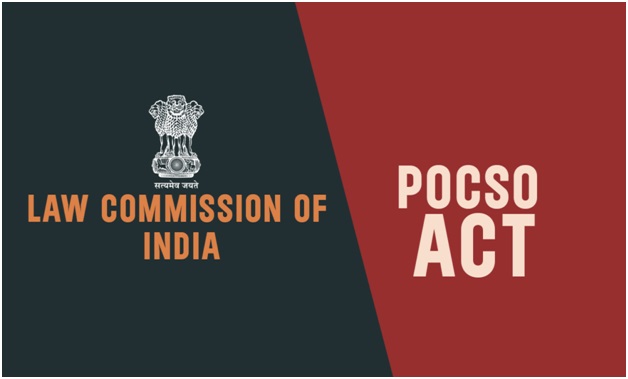
- 30 Sep 2023
Why is it in the News?
The Law Commission advises maintaining the current age of consent at 18 years under the Protection of Children from Sexual Offences (POCSO) Act. Reducing it could harm efforts to combat child marriage and trafficking.
Context:
- The Law Commission, led by Justice (Retired) Ritu Raj Awasthi, submitted Report No. 283 to the Law Ministry.
Key Points from the 22nd Law Commission Report:
- It advises against lowering the age of consent, citing potential negative impacts on combating child marriage and trafficking.
- The panel recommends amendments to the POCSO Act, 2012, addressing cases where 16 to 18-year-olds give tacit approval, not legal consent.
- Courts are advised to handle adolescent love cases with caution to maintain a balanced approach, prioritizing the child's best interests.
- The Law Commission also proposed phased implementation of e-FIR registration, starting with offenses carrying up to three years of imprisonment. This move aims to address delays in FIR registration and enable real-time reporting of crimes.
The Protection of Children from Sexual Offences (POCSO) Act:
- POCSO Act, enacted in 2012 and administered by the Ministry of Women and Child Development, is India's first comprehensive law addressing child sexual abuse.
- It aims to safeguard children from sexual assault, harassment, and pornography and establishes Special Courts for such cases.
- In 2019, amendments were made to enhance penalties for specific offenses, discouraging perpetrators and promoting a dignified upbringing.
- Key Features:
- Gender-neutral definition: The Act defines a child as "any person" below 18 years.
- Non-reporting as an offense: Those responsible for institutions must report sexual offenses involving subordinates, with penalties for failure to do so.
- No time limit for reporting abuse: Victims can report offenses at any time, even years later.
- Confidentiality of victim's identity: The Act prohibits the disclosure of the victim's identity in any media without authorization from special courts.
- Challenges:
- Rising abuse, especially during the Covid-19 pandemic, with the emergence of new forms of cybercrime.
- Lack of awareness among minors, parents, and society.
- Concerns about the criminalization of consensual sexual activity among adolescents prompted calls for legislative review by CJI D Y Chandrachud.
The Issue of Minors Facing Legal Action for Consensual Acts:
- Minors aged 16 to 18 engaging in consensual activities that could be considered sexual under the law face potential bookings under POCSO.
- Even though these cases of adolescent consensual activity may not always lead to the conviction of a minor, the legal framework could lead to the denial of bail and prolonged detention.
- A study revealed that in West Bengal, Assam, and Maharashtra, one in every four cases under the POCSO Act involved what could be termed as "romantic cases," where the victim was in a consensual relationship with the accused.
What Does 'Age of Consent' Mean?
- The 'age of consent' is the legal threshold at which a person is deemed capable of giving consent for sexual activities. Before the POCSO Act, this age was set at 16.
- Under the POCSO Act, any sexual activities involving individuals under 18 are classified as criminal offenses, regardless of whether mutual consent exists among minors.
- This determination is rooted in the legal assumption that individuals under 18 lack the capacity to provide consent within the legal framework.
China Rejects Expanding CPEC Cooperation in Energy, Water, and Climate with Pakistan (The Hindu)
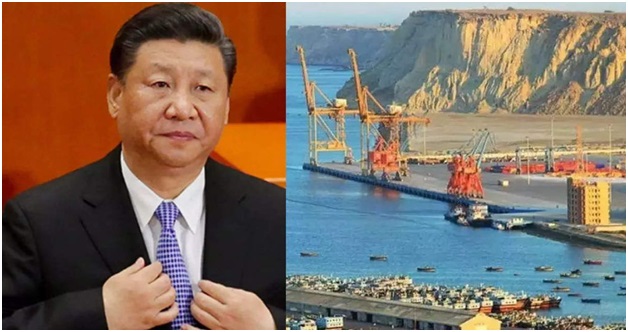
- 29 Sep 2023
Why is it in the News?
China has refused to further expand cooperation in the areas of energy, water management, and climate change under the multi-billion dollar China-Pakistan Economic Corridor (CPEC), it emerged on September 25, signalling a strain in the 'ironclad' friendship between the two all-weather allies.
Summary of News: Challenges Arise as China Rejects Pakistan's CPEC Expansion Proposals:
- In a significant development, Beijing has declined multiple investment proposals from Islamabad, spanning various sectors like energy, tourism, water management, and climate change, all within the ambit of the China-Pakistan Economic Corridor (CPEC).
- These decisions were revealed through the minutes of the 11th Joint Cooperation Committee (JCC) meeting, where the future of CPEC projects is discussed.
- The JCC serves as a pivotal decision-making body for CPEC matters.
- China's reluctance to expand cooperation in these specific areas within the CPEC framework highlights the current challenges faced by both nations in their efforts to further strengthen their economic partnership.
What is CPEC?
- CPEC, short for the China-Pakistan Economic Corridor, is a vast network of infrastructure projects spanning 3,000 kilometers.
- It connects China's northwest Xinjiang Uygur Autonomous Region to the Gwadar Port in Pakistan's western province of Balochistan.
- This initiative represents a bilateral partnership between Pakistan and China, designed to enhance connectivity within Pakistan through the development of highways, railways, pipelines, as well as energy and industrial infrastructure projects.
- The primary objective of CPEC is to enable China to establish access to the Middle East and Africa via the Gwadar Port, providing a strategic link to the Indian Ocean.
- In return, China actively supports various development projects in Pakistan, addressing the country's energy shortages and assisting in stabilizing its economic situation.
- It's important to note that CPEC is an integral part of the broader Belt and Road Initiative (BRI), initiated in 2013.
- The BRI aims to create an extensive network of land and sea routes connecting Southeast Asia, Central Asia, the Gulf region, Africa, and Europe, fostering international economic cooperation and development.
What are the Implications of CPEC for India?
- Challenges to Sovereignty: India has consistently voiced opposition to the CPEC project because it passes through the Pakistan-occupied Kashmir territory of Gilgit-Baltistan, a disputed region claimed by both India and Pakistan.
- The corridor is also perceived as a potential alternative economic route for the Indian-administered Kashmir Valley.
- Regional Optimism: Despite India's official stance, key stakeholders in the Indian state of Jammu and Kashmir have expressed optimism about the potential benefits of the CPEC project.
- Some local business and political leaders have even proposed declaring both sides of the Line of Control (LoC) in Kashmir as a 'Special Economic Zone.'
- Territorial Implications: The success of CPEC could bolster Gilgit-Baltistan's international recognition as part of Pakistani territory, undermining India's claim over this region, which spans 73,000 square kilometers and is home to over 1.8 million people.
- China's Maritime Influence: Once fully operational, CPEC could offer China a more efficient trade route to major U.S. ports on the East Coast, potentially reshaping international trade dynamics.
- This could grant China greater influence over global goods movement between the Atlantic and Pacific oceans.
- China's 'String of Pearls': CPEC aligns with China's broader strategy of expanding its presence in the Indian Ocean, often referred to as the 'String of Pearls.'
- This involves establishing a network of airfields and ports in countries surrounding India.
- Gwadar port's control would solidify China's dominance in the Indian Ocean region.
- Pakistan's Economic Boost: CPEC has the potential to accelerate Pakistan's economic development.
- With easier access to Chinese raw materials, Pakistan's textile and construction material industries could become regional leaders, potentially impacting Indian exports in similar sectors.
- Strengthening BRI and Chinese Influence: CPEC is a significant component of China's Belt and Road Initiative (BRI), aimed at enhancing trade connectivity with Eurasia.
- A more integrated China in the global economy may challenge India's aspirations for a permanent seat on the UN Security Council.
Way forward
- India has the opportunity to capitalize on its strategic positioning by collaborating with like-minded nations and actively engaging in multilateral endeavors such as:
- Asia-Africa Growth Corridor: This India-Japan economic cooperation agreement holds significant promise for India's strategic interests and serves as a potential counterbalance to China's influence.
- Blue Dot Network: Championed by the United States, the Blue Dot Network is a multi-stakeholder initiative that unites governments, the private sector, and civil society in the pursuit of establishing high-quality, trustworthy standards for global infrastructure development.
- It is poised to become a globally recognized system for evaluating and certifying infrastructure projects, particularly in the Indo-Pacific region.
Renewed Dispute Over Cauvery Water Sharing (Indian Express)
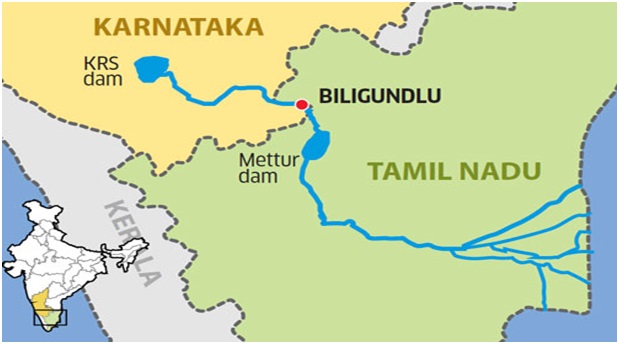
- 28 Sep 2023
Why is it in the News?
The resurgence of the Cauvery water-sharing conflict between Karnataka and Tamil Nadu, despite the Supreme Court's 2018 ruling on the longstanding dispute, is primarily due to inadequate rainfall in Karnataka's Cauvery river catchment area.
A Historical Overview of the Cauvery Water Dispute
- Origin of the Dispute Before Independence: The origins of the Cauvery water dispute trace back to 1892 during the British colonial era, involving the Madras Presidency and the Princely state of Mysore.
- In 1924, an agreement was reached between Mysore and Madras, with a validity period of 50 years.
- Post-Independence Dispute: The agreement signed between the Madras Presidency and the Princely state of Mysore concluded in 1974.
- Starting in 1974, Karnataka began diverting water into its four newly constructed reservoirs without obtaining consent from Tamil Nadu, leading to a post-independence dispute.
Supreme Court's Ruling on the Cauvery Water Dispute:
- Clear Allocation of Water Quantities to TN and Karnataka: In 2018, the Supreme Court made a definitive decision to allocate an additional 14.75 TMC (Thousand Million Cubic Feet) of water to Karnataka while reducing Tamil Nadu's share by the same amount.
- Karnataka's additional allocation was primarily designated for addressing the drinking water needs in southern Karnataka.
- As per this ruling, out of the total annual Cauvery water share of 740 TMC, Tamil Nadu was granted 404.25 TMC, Karnataka received 284.75 TMC, and Kerala obtained 30 TMC.
- Furthermore, the court allocated 7 TMCs to Puducherry and reserved 14 TMCs for environmental conservation and preventing waste into the sea.
- Establishment of CWMA (Cauvery Water Management Authority): The Supreme Court also mandated the establishment of the Cauvery Water Management Authority (CWMA) along with the Cauvery Water Regulatory Committee (CWRC) to resolve inter-state disputes according to the court's directives.
- The CWMA operates as a primarily non-political body operating under the supervision of the Union Water Resources Ministry.
- It serves as the central agency responsible for regulating disputes between the two states.
Reasons for the Ongoing Dispute:
- Political parties in both Karnataka and Tamil Nadu argue that the 2018 Supreme Court order delineated water-sharing guidelines solely for typical monsoon years, not accounting for scenarios of water scarcity.
- The present monsoon season is unfolding as deficient, with rainfall measuring more than 30 percent below the usual levels.
- In particular, the months of August and September, within the four-month monsoon period that commenced in June, have experienced the lowest rainfall in Karnataka in 123 years.
How the Current Crisis Has Unfolded?
- Karnataka's Reduced Water Release: Per the 2018 Supreme Court verdict, Karnataka is obligated to release 123.14 TMC (Thousand Million Cubic Feet) of water to Tamil Nadu between June and September during a normal monsoon year.
- For August and September in a typical monsoon season, Karnataka should release a combined total of 82.71 TMC.
- However, this year, Karnataka had only released 40 TMC of water by September 23, citing an ongoing distress situation in the state.
- Tamil Nadu's Engagement with CWMA: In August, Tamil Nadu turned to the Cauvery Water Management Authority (CWMA) to ensure regular water supplies.
- The Cauvery Water Regulatory Committee (CWRC), functioning under the CWMA, noted that rainfall in the Cauvery basin in Karnataka was 26 percent below normal by early August.
- The committee also observed that Karnataka had only released 30.252 TMC of water from June 1 to August 28, far less than the usual 80.451 TMC in a typical year.
- CWMA's Decision: In accordance with the committee's advice, the CWMA initially ordered the release of approximately 13 TMC of water for 15 days at a rate of 12,000 cubic feet per second (cusecs) per day, despite Tamil Nadu's request for 25,000 cusecs per day.
- Subsequently, after reviewing the monsoon situation once more, the CWRC and CWMA decreased Karnataka's water release to 5,000 cusecs per day, while Tamil Nadu sought 12,000 cusecs.
- Supreme Court's Verdict on CWMA's Decision: Both Tamil Nadu and Karnataka appealed to the Supreme Court to contest the CWMA's orders.
- However, the Supreme Court upheld the release of 5,000 cusecs of water until September 26.
- The Karnataka government has stated its intention to adhere to the Supreme Court's order until September 26 and then reassess the situation.
Karnataka's Arguments:
- Reliance on Southwest Monsoon: Karnataka contends that Tamil Nadu predominantly receives its significant rainfall during the retreating northeast monsoon period, typically occurring between October and November.
- In contrast, Karnataka heavily depends on rainfall during the southwest monsoon months from June to September.
- Protesters argue that water is being directed to Tamil Nadu as the southwest monsoon season nears its end, resulting in critically low storage levels in the Cauvery basin reservoirs in Karnataka.
- The Cauvery River serves as the primary source of drinking water for Bengaluru and for irrigation purposes in the Mandya region of the state.
- Mekedatu Check Dam Project Implementation: The Karnataka government is advocating for the execution of the Mekedatu Check Dam project on the Cauvery River.
- This project is designed to serve as a reservoir for Bengaluru's drinking water needs and to release surplus water to Tamil Nadu during crisis situations, such as the current one.
The Storage Status of Cauvery Basin Reservoirs in Karnataka:
- As of September 23, the four reservoirs located in the Cauvery basin – Krishna Raja Sagar, Kabini, Hemavathy, and Harangi – were at 50% of their storage capacity.
- Collectively, these reservoirs held 51.1 TMC (Thousand Million Cubic Feet) of water, compared to their total capacity of 104.5 TMC.
- According to the Karnataka government, the state's water requirements are estimated at 112 TMC (79 TMC for crop irrigation and 33 TMC for supplying Bengaluru's drinking water needs) until June 2024.
- Given that the southwest monsoon season in Karnataka is concluding, the Karnataka government asserts that the remaining water in the Cauvery basin reservoirs must be preserved for essential drinking water and agricultural irrigation purposes.
Is the Current Situation Unique?
- The current Cauvery water crisis bears similarities to previous crises that occurred in 1991, 2002, 2012, and 2016.
- What sets this crisis apart is that it has arisen after the Supreme Court's final resolution of the dispute in 2018.
- Furthermore, historical protests related to the Cauvery issue have sometimes escalated into violence, often driven by mainstream political parties attempting to gain favor with voters by adopting chauvinistic stances.
- In recent years, however, Karnataka's politicians have adopted a more conciliatory approach.
- Notably, in the Mandya region, farmers have shifted towards cultivating less water-intensive crops, and younger generations are increasingly moving away from agriculture.
- As a result, the Cauvery issue is no longer as emotionally charged as it was three decades ago.
In Conclusion
- The Cauvery River, often referred to as the 'Dakshina Ganga,' has long been recognized as the economic lifeline of the states it traverses, with its most significant impact being felt in Karnataka and Tamil Nadu.
- Although the contest over Cauvery's waters can be traced back to the 11th century AD, contemporary Tamil Nadu and Karnataka have grappled with disagreements regarding the sharing of Cauvery's waters.
- It is imperative for the states to shift away from a regional-centric approach and embrace cooperation and coordination as genuine solutions, transcending conflicts for the benefit of all.
Mains Question:
- How has the Cauvery River played a pivotal role in the economic development of Karnataka and Tamil Nadu, and what are the contemporary challenges and potential cooperative solutions in managing its water resources? (15M)
Parliament Panel Findings on the New Education Policy, 2020 (The Hindu)
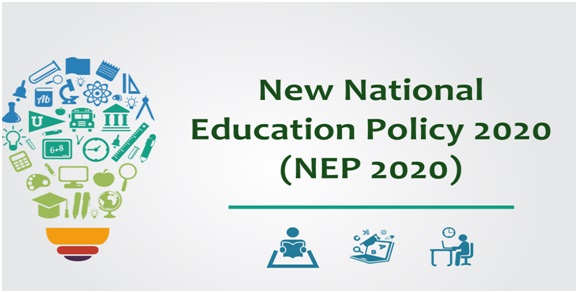
- 27 Sep 2023
Why is it in the News?
The Education Committee of the Parliament has just presented a report about how the National Education Policy (NEP) from 2020 is being put into action in higher education.
Assessment in the report:
- The report checks how well the National Education Policy (NEP) from 2020 is being used in higher education and what progress has been made.
- In India, there are currently 1043 universities.
- Most of them, around 70%, are run by state laws, while about 18% are managed by the Central Government.
- When it comes to students, 94% of them study at state or private institutions, and only 6% are in central institutions.
- The report says that more students are going to college now compared to a few years ago. This is measured using something called Gross Enrollment Ratio (GER), which has gone up from 24.1% in 2016-17 to 27.3% in 2020-21. It's also improved for ST and SC students during this time.
- GER is like a way to see how many students in the right age group (18-23 years) are in higher education compared to the total population.
Report's Status of Implementation:
- Things are going well with the implementation of NEP 2020, thanks to different initiatives like PM Schools for Rising India (PM SHRI), e-VIDHYA, and NIPUN Bharat. The goal is to change higher education to be more inclusive, flexible, and meet global standards.
- Jammu and Kashmir is leading the way by being one of the first places in India to start using NEP 2020 in all Higher Education Institutions starting from 2022.
- NEP 2020 wants students to become more creative and innovative. It encourages connections between colleges and industries and works on joint programs.
- Indian universities will get more freedom to set up campuses in other countries and welcome top 100 universities from around the world to work in India.
- NEP 2020 also allows students more flexibility with something called "Multi Entry and Multiple Exit (MEME)" options, which gives them more choices in their education.
Issues Related to NEP:
- Accessibility: Some students in economically disadvantaged areas can't easily access higher education because of money problems, where they live, and because they might feel like they don't belong due to stereotypes.
- Multiple Entry And Multiple Exit (MEME)System: Even though the MEME system seemed flexible, the report suggests it might not work as well in India as it does in Western countries.
- Language Barrier: Most higher education institutions use English to teach, but not many teach in local languages. This can be a problem for students who are more comfortable in their local language.
- Lack of Funding: India needs to spend more on education. Right now, it's only about 2.9% of the country's total income (GDP), but experts say it should be 6%. This means there's not enough funding for education.
Way Forward
- By 2030, the goal is to have at least one multi-purpose higher education institution in every district in India. And by 2035, they want 50% of students to be in higher education, including vocational training.
- They want to focus more on research and innovation to help India file more patents and improve its global ranking.
- To get more money for education, Higher Education Financing Agency (HEFA) should look for funds from sources other than the government, like private companies, foundations, and international banks.
- They plan to make better use of technology in education. Creating a National Educational Technology Forum (NETF) will help expand digital resources and make India a top place for knowledge.
- They also want to make it easier for students who study different subjects to get credit for their work. This will help them move between schools and colleges more smoothly.
National Education Policy (NEP) 2020:
- The National Education Policy, created in July 2020, shows what India's new education system will look like.
- A group led by Shri K. Kasturirangan made this policy.
- NEP 2020 has five important ideas: making education affordable, easy to access, high-quality, fair for everyone, and making sure everyone is responsible for learning.
- It's like a big plan to change both basic and higher education in India by 2040.
- This is the third big education plan since India became independent. The earlier ones were made in 1968 and 1986.
- The new policy focuses on things like studying different subjects, using technology, writing well, solving problems, thinking logically, and getting experience in different jobs.
The Geopolitical Significance of the Israel Link in an Economic Corridor (The Hindu)
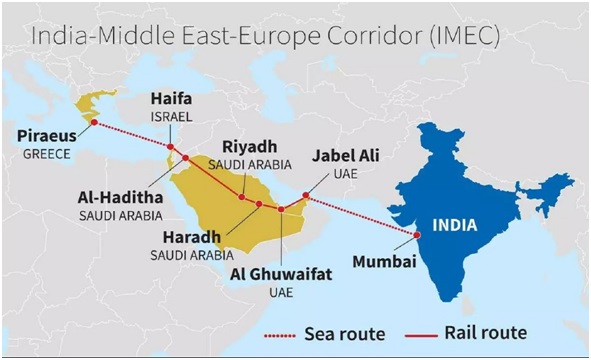
- 26 Sep 2023
Why is it in the News?
The G-20 Summit in 2023, hosted by India, achieved remarkable success despite the group's focus on economic matters in addressing global complexities. The global media recognized India's accomplishments during this summit for its diverse outcomes.
The significance of the G20 Delhi Declaration:
- A Collaborative Consensus: The declaration achieved a rare consensus among countries with diverse perspectives and interests.
- Balancing Act: The Delhi Declaration strikes a delicate balance by addressing global challenges without directly singling out specific nations for their actions.
- For instance, it refrains from naming Russia's aggression against Ukraine but underscores the importance of upholding the United Nations charter and principles of territorial sovereignty.
- Tailored to Diverse Interests: This balanced approach enables each member to identify elements in the declaration that align with their interests, contributing to its overall success.
- Showcasing India's Diplomatic Expertise: The declaration's significance lies in its ability to secure agreement from major world leaders, even in the midst of international power dynamics.
- Despite the absence of China's President Xi Jinping and Russian President Vladimir Putin at the summit, India demonstrated its diplomatic skill in bridging divides and fostering consensus among a diverse array of nations.
What is India-Middle East-Europe Economic Corridor (IMEEC)?
- One of the most significant outcomes of the G20 summit was the unveiling of the ambitious India-Middle East-Europe Economic Corridor, IMEEC.
- This corridor features a rail and sea route designed to facilitate the transportation of goods from India to Europe, passing through the UAE, Saudi Arabia, Jordan, and Israel.
- The project's implications extend beyond economic matters; it has the potential to reshape geopolitics in the future.
- Notably, it presents an intriguing challenge to China's Belt and Road Initiative, although this is just one aspect of its broader significance.
- The U.S. President hailed IMEEC as 'a truly monumental development,' emphasizing its transformative potential for all parties involved and the global community at large.
- The prompt endorsement of this project by the Israeli Prime Minister underscores Israel's eagerness to participate in this remarkable endeavor.
The Significance of IMEEC: A Game-Changer in Global Trade
- A Transformative Impact: IMEEC is poised to be a potential game-changer in the realm of global trade, offering an alternative to China's extensive strategic infrastructure investments.
- Enhancing Prosperity: This corridor promises to boost prosperity in the participating countries by facilitating the flow of energy and digital communications.
- It addresses the pressing need for infrastructure in lower- and middle-income nations, fostering economic growth.
- Strengthening Regional Ties: The improved infrastructure will not only drive economic growth but also promote closer ties among Middle Eastern countries.
- Countering China's Influence:
- IMEEC arrives at a juncture when Saudi Arabia and the UAE, traditional U.S. allies, have been strengthening their connections with China and the rapidly growing Eastern economies.
- China's role in the Middle East has expanded, including its involvement in brokering regional agreements.
- A Response to China's Belt and Road Initiative (BRI): Washington views IMEEC as an ambitious endeavor to counter China's Belt and Road Initiative, which aimed to enhance global connectivity with China's economy.
- Recent challenges, such as rising loan defaults and slowed investments, have cast doubts on the viability of China's BRI.
- Strategic Significance for India: For India, IMEEC holds immense geopolitical and trade importance.
- Concerns arose over China's connectivity projects in the region, and India faced hurdles, including Pakistan's refusal to grant overland access.
- India's attempts to establish credible connectivity through Iran faced challenges due to geopolitical complexities.
- IMEEC provides a solution by offering connectivity to both the Arabian Peninsula and Europe, addressing India's strategic concerns.
The Role of Israel in the Economic Corridor
- The U.S. initiative is designed to reshape the geoeconomic landscape of the Middle East through connectivity projects like IMEEC.
- The United States believes that these projects can address concerns among Gulf countries, reaffirm its commitment to the region, reduce tensions with Iran, and strengthen its leadership in the Gulf.
- However, achieving these strategic objectives hinges on advancing the normalization agenda outlined in the Abraham Accords, particularly with Saudi Arabia.
- Furthermore, the normalization of relations between Israel and Saudi Arabia is a critical prerequisite for the realization of this economic corridor.
Why Israel Wasn't Part of the Corridor Launch
- Unprecedented Middle Eastern Presence: India made history within the G20 by inviting the largest number of Middle Eastern countries ever to participate as guests in the summit.
- However, notably, India's strategic partner from the region, Israel, did not receive a similar invitation.
- Regional Considerations: India's decision to exclude Israel from the guest list may have been influenced by regional sensitivities, particularly regarding the preferences of Arab countries.
- U.S. Influence: The U.S. administration's avoidance of engaging with the Israeli Prime Minister for several months due to domestic politics may have played a role in Israel's role at the summit.
- Domestic Political Factors: In his statement following the corridor's launch, the Israeli Prime Minister expressed gratitude to the U.S. President but did not mention the Indian Prime Minister.
- This omission could be linked to Netanyahu's domestic political challenges and his previous inattention to U.S. foreign policy goals.
The Path Ahead
- Normalization of Saudi-Israel Relations: Saudi Arabia is open to ending its diplomatic boycott of Israel, but it comes with conditions.
- Saudis expect Israel to commit to the two-state solution and the well-being of the Palestinian people, even if the occupation persists for some time.
- Resolution of Israel-Palestine Conflict: Currently, on the sidelines of the UN General Assembly, Saudi Arabia, along with the Arab League and the EU, is collaborating with Egypt and Jordan to launch a 'Peace Day Effort.'
- This initiative aims to encourage Israelis and Palestinian leaders to find compromises.
- Achieving peace in the Israel-Palestine conflict is a formidable challenge, especially considering the rise of extremism on both sides.
- Waiting for Progress: The realization of the India-Middle East-Europe Economic Corridor may need to await progress in the Israel-Palestine situation.
The IMEEC plan faces a significant hurdle with Israel's aspiration for normalized relations with Saudi Arabia, which Riyadh does not currently endorse. Despite not formally joining, the new IMEEC effectively brings Saudi Arabia into the fold. With time, the corridor could create the economic and psychological conditions necessary for normalization.
Mains Question:
- Discuss the role of regional dynamics and international influences in the potential normalization of relations between Israel and Saudi Arabia, and how this could impact the progression of the India-Middle East-Europe Economic Corridor (IMEEC). (15M)
The NIA and its Authority Regarding Property Seizure (Indian Express)
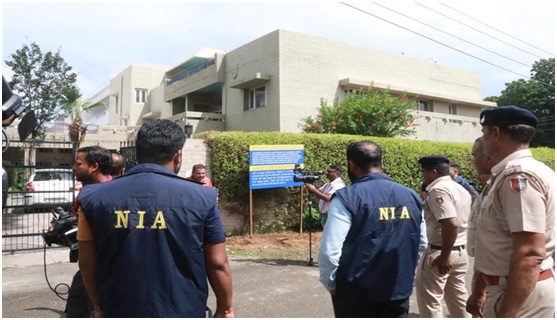
- 25 Sep 2023
Why is it in the News?
The National Investigation Agency (NIA) seized property, including land and a portion of a house owned by Gurpatwant Singh Pannu, the founder and attorney of the banned Sikhs for Justice based in the United States, in Amritsar and Chandigarh.
Why Was the National Investigation Agency Established?
- In recent decades, India has faced significant acts of terrorism originating from beyond its borders.
- Many of these attacks have intricate connections across states and international boundaries, possibly linked to activities like arms and drug smuggling, as well as the circulation of counterfeit Indian currency.
- Recognizing these challenges, there arose a need to establish a central-level agency dedicated to investigating terrorism-related offenses and certain other acts with nationwide implications.
- Various experts and committees, including the Administrative Reforms Commission in its report, had proposed the creation of such an agency.
About the National Investigation Agency:
- The National Investigation Agency (NIA) came into existence with the enactment of the National Investigation Agency Act in 2008.
- This Act empowers the NIA to:
- Take proactive notice of terrorist activities anywhere in India and initiate investigations.
- Enter any state without requiring permission from the state government.
- Conduct investigations and make arrests.
- The NIA is India's primary Central Counter-Terrorism Law Enforcement Agency.
Objectives:
- Establish high standards of excellence in national-level counter-terrorism and other security-related investigations by developing a highly skilled, collaborative workforce.
- Act as a deterrent to both existing and potential terrorist groups or individuals.Jurisdiction:
- The provisions of the NIA Act apply throughout India and extend to Indian citizens residing outside the country.
- Headquarters: New Delhi
- Supervising Ministry: Ministry of Home Affairs
Roles of NIA:
- Conducting thorough, expert investigations of scheduled offenses utilizing state-of-the-art forensic techniques, and establishing high investigative standards to guarantee the detection of all cases assigned to the NIA.
- Facilitating efficient and prompt legal proceedings.
- Fostering professional and cooperative interactions with the governments of States, Union Territories, and other law enforcement agencies, in accordance with the legal requirements of the NIA Act.
- Providing assistance to all States and other investigative bodies in handling terrorist cases.
- Establishing a comprehensive database containing all pertinent terrorist-related information and sharing this database with States and other relevant agencies.
Is the NIA Authorized to Carry Out Searches and Asset Seizures?
- Under the Unlawful Activities (Prevention) Amendment Act (UAPA), enacted in 2019, NIA officers have the authority to conduct searches and confiscate properties suspected of being associated with terrorist activities.
- NIA is not obligated to obtain permission from a state's Director General of Police.
- The investigating officer only needs approval from the Director General of NIA.
What Changes Were Introduced by the NIA (Amendment) Act 2019?
- Offenses Beyond Borders:
- Initially, the NIA had jurisdiction over crimes solely within India.
- However, the amended Act extends its authority to investigate crimes committed outside of India, provided it adheres to international treaties and the laws of the respective countries involved.
- If the Central Government believes that a crime committed abroad falls within the Act's jurisdiction, it can direct the NIA to investigate it as if it occurred in India.
Expanded Scope of Legal Authority:
- The NIA can investigate offenses listed in the Schedule of the NIA Act.
- Originally, this Schedule included Acts such as The Atomic Energy Act, 1962, The Unlawful Activities (Prevention) Act, 1967, and The Anti-Hijacking Act, 1982, among others.
- With the amendment, the NIA can now also probe cases related to:
- Human Trafficking
- Counterfeit currency or banknotes
- Prohibited arms
- Cyber-terrorism
- Crimes under the Explosive Substances Act, 1908
Establishment of Special Courts:
- The 2008 Act established Special Courts for the trial of cases under the Act.
- The 2019 amendment grants the central government the authority to designate Sessions Courts as Special Courts for the trial of Scheduled Offenses under the Act.
- Before doing so, the central government must consult with the Chief Justice of the relevant High Court.
- In cases where multiple Special Courts exist in an area, the most senior judge will assign cases.
- Additionally, state governments have the power to designate Sessions Courts as Special Courts to try scheduled offenses.
Non-performing Assets (NPAs) and Wilful Defaulters (Indian Express)
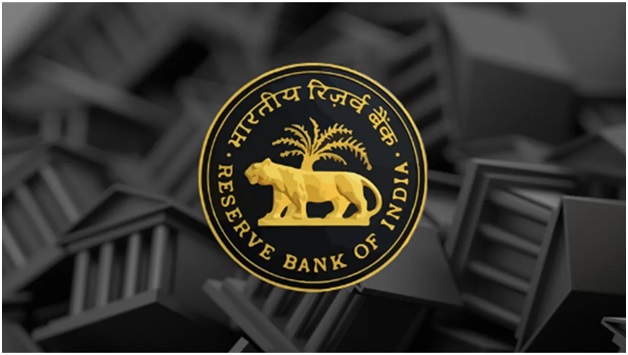
- 23 Sep 2023
Why is it in News?
The Reserve Bank of India (RBI) has put forth a proposal that requires lenders to categorize a borrower as a "wilful defaulter" within six months of their account being declared a non-performing asset (NPA). Previously, the RBI did not have a specific timeframe for identifying such borrowers.
Context:
- The RBI defines wilful defaulters as individuals or entities that have the means to repay a bank's dues but deliberately do not, or divert bank funds.
- A "large defaulter" refers to someone with outstanding dues of Rs 1 crore or more, whose account has been categorized as doubtful or a loss.
- A "wilful defaulter" is a borrower or guarantor who has committed wilful default, with an outstanding amount of Rs 25 lakh or more.
According to the RBI's draft guidelines:
- Lenders must assess the "wilful default" aspect for all accounts with outstanding amounts of Rs 25 lakh and above or as per RBI notifications.
- The process of classifying or declaring a borrower as a wilful defaulter should be completed within six months of the account becoming an NPA.
- An Identification Committee, established by lenders, must scrutinize evidence of wilful default.
- Lenders must investigate the wilful default aspect thoroughly before transferring the credit facility to other lenders or asset reconstruction companies (ARCs).
Other aspects of the RBI's draft guidelines include:
- No additional credit facility should be extended by any lender to a wilful defaulter or any entity associated with them.
- This prohibition on additional credit lasts for up to one year after the wilful defaulter's name is removed from the List of Wilful Defaulters (LWD) by the lenders.
- Wilful defaulters are ineligible for credit facility restructuring.
- These guideline revisions come after reviewing instructions and considering various judgments and orders from the Supreme Court and High Courts.
What is Non-Performing Assets (NPAs)?
- Non-Performing Assets, often referred to as NPAs, represent loans or advances for which the principal or interest payments have remained overdue for a period of 90 days or more.
- For banks, loans are considered assets because the interest they generate is a significant source of income.
- However, when customers, whether individuals or corporations, are unable to make interest payments, these assets become "non-performing" for the bank as they cease to generate income.
- Therefore, the RBI defines NPAs as assets that no longer generate income for banks. Banks are required to disclose their NPA figures to the public and report them to the RBI periodically.
- Classification of Assets: According to RBI guidelines, banks must further categorize NPAs into three types:
- Substandard assets: These are assets that have been NPAs for less than or equal to 12 months.
- Doubtful assets: Assets that have remained in the substandard category for 12 months.
- Loss assets: These are considered uncollectible and of such minimal value that keeping them as bankable assets is not justified, although some minimal recovery value may exist.
- NPA Provisioning: Provisioning for a loan refers to setting aside a certain percentage of the loan amount as a reserve. The standard rate of provisioning in Indian banks ranges from 5-20%, depending on the business sector and the borrower's repayment capacity. However, in the case of NPAs, 100% provisioning is required in accordance with Basel-III norms.
- GNPA and NNPA: Two key metrics help us understand a bank's NPA situation.
- GNPA (Gross Non-Performing Assets) represents the total value of gross NPAs a bank has in a specific quarter or financial year.
- NNPA (Net Non-Performing Assets) subtracts the provisions made by the bank from the gross NPA, providing the exact value of NPAs after specific provisions.
- NPA Ratios: NPAs can also be expressed as percentages of total advances, indicating the proportion of advances that are not recoverable.
- For instance:
- GNPA ratio is the ratio of the total GNPA to the total advances.
- NNPA ratio uses net NPA to calculate the ratio to the total advances.
Impact of NPAs and the Current Situation with Future Projections for India:
- Effects of NPAs: Banks face a shortage of funds for lending to other productive sectors in the economy.
- To maintain their profit margins, banks may need to raise interest rates.
- Reduced investments could lead to an increase in unemployment rates.
- Banks have the option to retain NPAs in their books with hopes of recovery, make provisions for them, or write off the loans entirely as bad debt.
- Present State of NPAs in India: According to the latest RBI Financial Stability Report, the gross NPA ratio of scheduled commercial banks (SCBs) reached a 10-year low of 3.9% in March 2023.
- Both gross and net NPA ratios have declined significantly from their peak levels of 11.5% and 6.1% in March 2018 to 3.9% and 1.0% in March 2023, respectively.
- A contributing factor to the reduction in gross NPAs in 2022-23 was the substantial write-offs undertaken by banks.
- Future Projection for India: Based on stress test results, it is anticipated that the GNPA ratio for all SCBs may improve to 3.6% by March 2024.
- However, in the event of a deterioration in the macroeconomic environment, leading to medium or severe stress scenarios, the GNPA ratio could potentially rise to 4.1% and 5.1%, respectively.
Mains Question:
- Evaluate the impact of rising NPAs on the Indian economy, including effects on bank lending, interest rates, and employment. Elucidate the current NPAs situation in India and discuss future projections in light of recent trends. (10M)
Canada Needs to See India – Not Just the Diaspora (Indian Express)
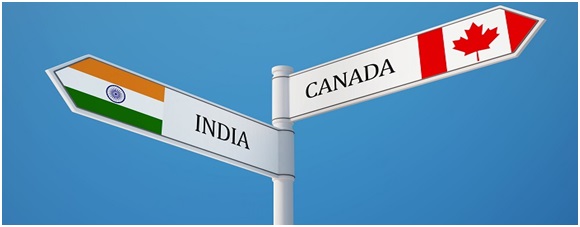
- 22 Sep 2023
Why is it in News?
The Canadian Prime Minister's statement in Parliament, accusing Indian agents of the death of Hardeep Singh Nijjar, has significantly strained India-Canada relations. Rebuilding trust will necessitate a thorough and open political dialogue on the role and politicization of Canada's Indian diaspora and its impact on bilateral relations.
Recent Developments Leading to the Current Standoff:
- Death of Khalistan Tiger Force (KTF) Chief:
- Hardeep Singh Nijjar, wanted by the Indian government, was killed in a shooting in Surrey in June.
- The National Investigation Agency (NIA) had announced a Rs 10 lakh reward for Nijjar in 2022, accusing him of conspiring to kill a Hindu priest in Jalandhar, Punjab.
- G20 Summit Discussions:
- During the G20 Summit in Delhi, the Canadian PM and the Indian PM discussed Khalistani extremism.
- The Canadian PM raised concerns about foreign interference in Nijjar's murder and sought India's cooperation in the investigation.
- The Indian PM expressed deep concerns about ongoing anti-India activities by extremist elements in Canada.
- Canadian Parliament Statement and Diplomatic Expulsions:
- Canada's PM accused "agents of the Indian government" in Nijjar's killing.
- Canada expelled the top Indian diplomat, the head of RAW, from the country.
- In response, the Indian government summoned the High Commissioner of Canada and expelled a senior Canadian diplomat from India.
The Evolution of India-Canada Relations:
- During the Cold War:
- During the Cold War, India and Canada enjoyed a positive relationship, driven by their shared Commonwealth status and common views on the importance of the United Nations, multilateralism, and global development.
- However, differences arose during Cold War conflicts like Korea, Hungary, and Vietnam, straining relations. India's pursuit of a nuclear program also added complexity.
- Post-Cold War (1980s):
- Increasing immigration from India began to improve relations, but limited opportunities for trade and security cooperation hindered substantial diplomatic engagement.
- Post-1998:
- Significant efforts were made to reinvigorate the relationship after 1998 when Canada rejected India's nuclear status.
- Current Status:
- Today, the focal point of the relationship is investment and trade.
- However, it's important to note that certain segments of the diaspora community harbor strong negative sentiments towards India, reject its territorial integrity, and aim to fragment it.
Canada's Role in Straining India-Canada Relations:
- Failure to Address Anti-India Activities:
- Canada's reluctance to take action against anti-India activities on its soil has contributed to the deterioration of relations.
- The Canadian PM's emphasis on the rule of law overlooks the impact of individuals like Nijjar and his separatist associates, who have engaged in activities affecting both Canada and India.
- Instances of violence against Indian diplomats were not adequately addressed, and some individuals continued vandalizing places of worship in Canada while disregarding Indian legal processes, as seen during the farmer protests.
- Appeasement of Diaspora Politics:
- The Canadian government, both Liberal and Conservative parties, has shown sympathy toward Khalistani groups and other diaspora elements, influencing its foreign policy.
- These policies have accommodated diaspora groups using Canadian soil for activities that pose risks to the interests and security of other nations, notably India.
Significance and Hurdles in Engaging with the Indian Diaspora:
- Importance to the Indian Economy and Strategic Relations:
- The current Indian government has intensified diaspora engagement, encouraging them to invest in India's economic development.
- Wealthy NRIs play a crucial role in sending remittances, establishing networks, and contributing ideas to India.
- Diaspora support has strengthened India's strategic alliances, including with the US, and has furthered national initiatives like Make in India and Digital India.
- Challenges:
- The Indian government is concerned about the views of pro-Khalistan groups within the diaspora, which challenge India's territorial integrity and criticize its treatment of ethnic minorities.
- These challenges are growing, posing a significant issue for Indian foreign policy that traditionally had a strategic perspective on most diaspora groups.
- Indian PM's foreign visits are increasingly met with civil society groups advocating for human rights.
- Recent pro-Khalistan protests in the US, UK, Canada, and Australia have become
- increasingly contentious and sometimes violent.
Realigning India's Diaspora Engagement:
- The digital age has reshaped the way Indian immigrants connect with their homeland, influencing their political views, language preferences, and ideological inclinations.
- Ideas disseminated online can have cross-border consequences, as evident in the Khalistani context.
- In the era of social media, the impact and influence of diaspora groups are magnified.
- India should move beyond conventional approaches that emphasize engaging and mobilizing the Indian diaspora for national objectives.
- It's essential to recognize that certain groups actively oppose India's interests and foreign policy goals.
Steps to Improve India-Canada Relations:
- Focus on Engaging India, Not Diaspora Politics:
- The root cause of strained India-Canada relations lies in a problematic form of diaspora politics, where Canadian political parties engage with and appease groups involved in anti-India activities.
- Canadian governments should prioritize national security and foreign policy interests over short-term electoral gains, moving away from this type of diaspora politics.
- Ottawa should engage with New Delhi without viewing it solely through the lens of diaspora politics.
- Establish a Political Agreement:
- India is essential for Canada's Indo-Pacific strategy to remain relevant.
- Both nations have shared interests in upholding the international order, managing China's rise, collaborating on climate change, global health, and addressing challenges related to digital technologies.
- Addressing these challenges requires a political agreement that considers how both countries perceive Canada's Indian diaspora and curbs any negative influences, particularly those fueling India's separatist agenda.
In conclusion, bridging the gap between Ottawa and Delhi requires addressing India's concerns and establishing direct communication with India. This divide should be measured not only in terms of geography but also in terms of mindset.
The Shift to Eurasia: Global Order Changes with the G20-IMEC Plan (Indian Express)
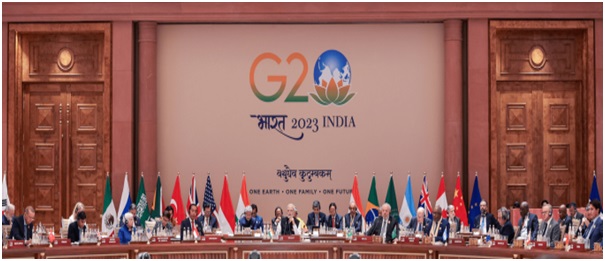
- 21 Sep 2023
Why is it in News?
- At the 18th G20 Summit held in New Delhi, the US President, along with leaders from India, Saudi Arabia, UAE, France, Germany, Italy, and the European Commission, introduced the expansive India-Middle East-Europe Corridor (IMEC) project.
- This ambitious initiative aims to establish robust connections for India, including sea routes to the Arabian Gulf and a northern pathway connecting Saudi Arabia to Europe through Jordan and Israel.
Importance of the India-Middle East-Europe Corridor (IMEC):
- Shared Vision Embodied: The IMEC embodies a collective vision uniting nations with a combined GDP of approximately $47 trillion, constituting roughly 40 percent of the world's total GDP.
- This vision extends beyond trade, energy, and digital resilience.
- Pathway to an Interconnected Transoceanic System: The Corridor paves the way for a more interconnected transoceanic system, stretching from the Mediterranean region through West Asia into the vast Indo-Pacific.
- Recognition of Non-Western Powers: The IMEC signifies recognition by the US and EU of the ascent of non-Western powers and the undeniable shift of the global economic and geopolitical center eastward.
- It underscores the need to allocate more substantial global leadership roles to India, Saudi Arabia, and the UAE, key actors reshaping the future economic and geopolitical landscape in Eurasia.
- Influence of Emerging Powers: Abu Dhabi, Riyadh, New Delhi, and other emerging powers in Eurasia will wield significant influence in recalibrating broader power dynamics across the supercontinent.
How Will IMEC Impact the Global Order in Eurasia?
- Facilitating Diplomacy Between Hostile Nations: An often overlooked aspect of IMEC is how its very existence, along with its design and operational challenges, serves as another step toward bringing Saudi Arabia and Israel closer together.
- This initiative aligns with ongoing US-backed attempts to secure a normalization agreement between the two nations.
- Promoting Equitable Power Dynamics in Eurasia: IMEC aligns with the US's Eurasian strategy in a post-hegemonic era, aiming to establish a more balanced power structure across the wider Eurasian landscape.
- The objective is to prevent a loose coalition of states, including China, Russia, and Iran, from dominating the supercontinent.
- Instead, it seeks to bolster the influence of countries like India, Saudi Arabia, and Japan, enabling them to project economic and geopolitical power and contribute actively to a balanced Eurasian power structure.
- Europe Embracing Multipolarity Beyond Its Borders: Particularly for Europe, the Corridor represents a significant effort to attain geopolitical relevance and unity beyond the European continent in a new multipolar reality.
- Countries such as Italy, Germany, and France are aligning their efforts with the United States and Asian powers, aiming to move beyond occasional maritime exercises in the Indo-Pacific and integrate their economic systems into high-growth markets in the East.
How Will IMEC Serve India's Geopolitical Interests?
- Enhancing Strategic Engagement with the Arab World: The Indian government now has a unique opportunity to establish enduring connectivity between India and the Arabian region.
- This initiative will reassert India's role as a driving force in shaping regional connectivity.
- Bypassing Pakistan's Veto: For decades, Pakistan had staunchly opposed granting India access to land-locked Afghanistan and Central Asia.
- The successful implementation of this project will provide India with an alternative route to connect with Central Asia and Europe, circumventing Pakistan's objections.
- Strengthening US-India Cooperation in the Middle East: While conventional wisdom suggested that India and the United States primarily collaborated in the Indo-Pacific, with limited common interests in the Middle East, this perception changed when India and the US, alongside Israel and the UAE, established the I2U2 forum to develop joint economic projects.
- The India-Arabia-Europa corridor could prove to be even more impactful.
IMEC and Its Relationship with China:
- The US and EU might be inclined to present IMEC as a potential counterpart to China's Belt and Road Initiative.
- For Delhi, Abu Dhabi, and Riyadh, whether as existing (in India's case) or new members (in the case of Saudi Arabia and the UAE) of the BRICS group, IMEC symbolizes the emergence of a West Asian framework.
- Within this framework, countries like India, Saudi Arabia, the UAE, Oman, and Egypt are steadily expanding their integration, encompassing aspects beyond energy, remittances, and ideology.
Way Forward
- Preserving the Significance of the Corridor Launch: The symbolism associated with the Corridor's launch in New Delhi and the absence of Russia and China at the Summit should not be underestimated. It's crucial to avoid drawing misguided conclusions from this symbolism by the US and EU.
- Embracing a Balanced Approach: For countries like India, Saudi Arabia, and the UAE, the pursuit of a balanced Eurasian structure doesn't necessitate forming a coalition aimed at containing China and Russia.
- The Russian President's statement that the IMEC complements Russia's North-South project should be considered in this context.
- Ensuring IMEC Success: The success of IMEC hinges on several critical factors, including conducting a pragmatic assessment of each nation's motivations for participation, advancing the project beyond a Memorandum of Understanding (MoU), addressing logistical challenges, and prioritizing elements like electricity, digital connectivity, and clean hydrogen during the Corridor's initial phases.
- Addressing Security Concerns: The IMEC nations should also proactively address potential security challenges that may arise due to increased Eurasian connectivity.
- The inauguration of IMEC represents a noteworthy step in the evolving global power dynamics, with a clear shift towards the East.
- It underscores the dedication of the US, Europe, and emerging players like India, Saudi Arabia, and the UAE to foster a more equitable and interconnected Eurasian arrangement.
- The success of IMEC has the potential to set a precedent for future transcontinental initiatives seeking to establish a more balanced Eurasian framework.
Mains Question:
- Elaborate on the implications of the India-Middle East-Europe Corridor (IMEC) launch for the global power shift, highlighting the potential influence on India including global power dynamics and future transcontinental initiatives. (15M)
Women’s Reservation Bill Introduced in Loksabha (Indian Express)
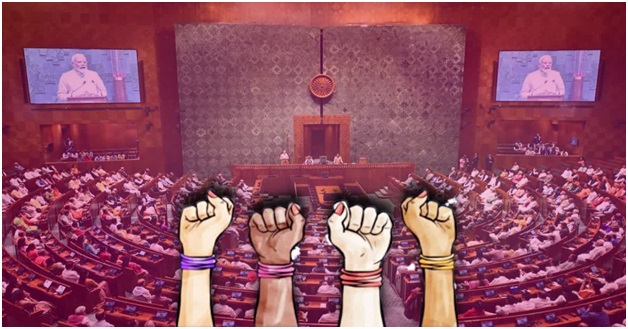
- 20 Sep 2023
Why is it in News?
The One Hundred Twenty-Eight Amendment Bill 2023, also known as the Women Reservation Bill, has been presented in the Lok Sabha. This bill aims to allocate one-third of all seats for women in both the Lok Sabha and state legislative assemblies.
The Historical Background of the Women's Reservation Bill:
- The demand for political reservation for women has been a longstanding one, dating back to the pre-independence era.
- Various committees have advocated for women's political reservation.
A Brief Journey of Women's Political Reservation:
- During the National Movement, in 1931, three women's organizations sent a letter to the British Prime Minister requesting political reservation for women.
- In the Constituent Assembly debates, the issue of women's reservation was discussed.
- However, it was rejected on the premise that a democracy should provide representation to all groups.
- In 1971, the Committee on the Status of Women in India and in 1988, the National Perspective Plan for Women both recommended reserving seats for women in local bodies.
- These recommendations led to the 73rd and 74th amendments to the Constitution, which mandate that all State governments reserve one-third of seats for women in local bodies.
- Nonetheless, the matter of reservation in the Parliament and Legislative Assemblies remained unresolved until the introduction of the Women's Reservation Bill.
Historical Progression of the Women's Reservation Bill:
- 1996: The Women's Reservation Bill made its debut in 1996 as the 81st Constitutional Amendment Bill under the Deve Gowda government.
- It was referred to a parliamentary select committee led by Geeta Mukherjee. However, the Bill expired with the dissolution of the Lok Sabha due to a lack of consensus, particularly regarding reservation for OBC women.
- 1999: The NDA government revived the Bill in the 13th Lok Sabha and presented it twice in 2003.
- Unfortunately, these attempts to pass the bills were unsuccessful, resulting in their expiration.
- 2004: The UPA government incorporated the reservation bill into its Common Minimum Programme and placed it in the Rajya Sabha to prevent it from lapsing once more.
- 2010: The Women's Reservation Bill, initially introduced as the 108th Constitutional Amendment Bill in 2008, was successfully passed in the Rajya Sabha but lapsed in the Lok Sabha.
- Its most vocal opponents included the RJD, the JD(U), and the SP, who advocated for 33% reservation for backward groups within the 33% women's quota.
Arguments in Support of the Bill:
- Enhancing Women's Political Representation: India ranks lower than 140 other nations in terms of women's representation in national legislatures, as per the Inter-Parliamentary Union (IPU) 'Women in Parliament' Report (2021).
- Despite some increase in women's representation in the Lok Sabha since independence (around 16% in the 17th Lok Sabha), India lags behind several African and South Asian countries like Nepal, Pakistan, and Sri Lanka.
- Empowering Women's Leadership for Change: Studies on panchayats have demonstrated the positive impact of women's reservation on women's empowerment and resource allocation.
- For instance, a former woman Sarpanch of Dhani Mayan Khan GP in Haryana established a training center for women and ensured that every village child attended school.
- Advancing the Decriminalization of Politics: Reserved seats for women could contribute to the decriminalization of Indian politics.
- Currently, in the Lok Sabha, 159 MPs have declared serious criminal cases against them, including rape, murder, attempted murder, kidnapping, and crimes against women.
- Addressing Crimes Against Women: The Women's Reservation Bill can play a role in addressing crimes against women in society, potentially leading to a decrease in cases like the Nirbhaya Rape Case.
- Aligning Representation with Vote Share: Despite an increase in women's vote share, their representation in political positions has not kept pace.
- Women in India vote at a rate similar to men, but their representation in political roles remains significantly lower.
- Breaking the Patriarchal Nature of Indian Politics: Indian politics has traditionally been patriarchal, with top party positions and positions of power predominantly held by men.
- The Women's Reservation Bill has the potential to challenge and transform this patriarchal aspect of Indian politics.
- Challenging Stereotypes: An increase in women politicians can help break stereotypes that limit women to the role of 'homemakers,' fostering a broader acceptance of women as lawmakers.
Arguments Opposing the Bill:
- Lack of Separate OBC Reservation: The Bill reserves seats separately for Scheduled Castes and Scheduled Tribes women within the existing one-third quota of seats.
- However, it does not provide separate reservation for OBC women, who constitute 60% of the female population.
- Exclusion from Rajya Sabha and Legislative Councils: The Bill does not extend reservations to women in the Rajya Sabha and the Legislative Councils, limiting its scope.
- Potential Misuse with Proxy Candidates: Some argue that the introduction of women's reservations could lead to the emergence of 'MP and MLA Patis,' where individuals use their wives as proxy candidates for reserved seats, wielding the actual power.
- Contradiction with Equality Principles: Opponents contend that the idea of women's reservation contradicts the principle of equality enshrined in the Constitution.
- They argue that such reservations could perpetuate the unequal status of women, as they might not be perceived as competing based on merit.
- Heterogeneity of Women: Women are a diverse group with varied backgrounds and interests, unlike caste groups.
- Consequently, the same arguments used to justify caste-based reservations may not be directly applicable to women.
- Women's interests are interconnected with other social, economic, and political strata.
- Restricting Voter Choice: Critics argue that reserving seats for women could limit voter choices.
- Instead of reservations, opponents of the Bill have proposed alternative approaches, such as women's reservation within political parties and the implementation of dual-member constituencies, where each constituency has two MPs, with one being a woman.
Key Provisions of the Women Reservation Bill 2023:
- Reservation of one-third of all seats for women in the Lok Sabha, state legislative assemblies, and the legislature of the National Capital Territory of Delhi.
- Within this allocation, one-third of the seats will be reserved for scheduled castes and scheduled tribes.
- The reservations will remain in effect for 15 years from the law's commencement.
- However, Parliament has the authority to extend the reservation period beyond 15 years through legislation.
- Reserved seats may be subject to rotation.
- This means that seats designated for women will not remain fixed but will rotate after each election cycle.
- The provisions will come into effect only after a delimitation exercise is carried out for this purpose.
- Delimitation will be based on the data collected in the first census conducted after the bill's passage.
- The amendment will be implemented following the dissolution of the respective house or legislative assembly and will not impact any existing representation.
- For instance, even after the Bill's passage, one-third women's representation will not be immediately applicable.
- It will become effective as each state completes its assembly term and holds elections.
What Steps Can Be Taken Moving Forward?
In addition to the Women's Reservation Bill, India should consider implementing the following reforms to enhance the political empowerment of women:
- Institutionalizing Intra-Party Democracy: Encourage intra-party democracy to broaden the pool of women candidates within political parties.
- Strengthening Women's Agencies and Organizations: Support and reinforce women's agencies and organizations to contribute to the creation of a progressive society with equal opportunities for all citizens.
- Promoting Women's Participation at the Panchayat Level: Enhance women's participation at the panchayat level by strengthening women's self-help groups.
- Encouraging Girls' Participation in College/University Politics: Promote the active involvement of girls in college/university student political parties and political debates to nurture future women leaders.
Mains Question:
- What are the key provisions and potential challenges associated with the Women's Reservation Bill 2023, and how can these challenges be addressed to ensure effective implementation and increased political empowerment of women in India? (15M)
Enhancing the Benefits of Research for Basmati Rice in India (Indian Express)
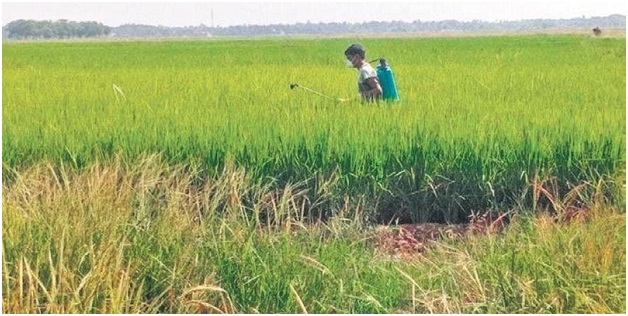
- 19 Sep 2023
Why is it in News?
Over the past three decades, the yearly exports of Basmati Rice have surged from 0.3-0.35 million tonnes (valued at $200-250 million) to 4.5-4.6 million tonnes, with a value of $4.7-4.8 billion.
Transforming the Rice Industry in India:
- Until the late 1980s, Indian farmers cultivated traditional tall basmati rice varieties, which reached heights of 150-160 cm.
- However, these tall plants were susceptible to lodging, bending over when laden with well-filled grains, and they produced a meager 10 quintals of paddy per acre over a lengthy period of 155-160 days, from nursery sowing to harvesting.
- Some of these traditional varieties included Taraori (also known as Karnal Local or HBC-19) and Dehraduni (Type-3).
- The turning point occurred when the Indian Agricultural Research Institute (IARI) introduced Pusa Basmati-1 (PB-1), an improved variety released in 1989.
- By the early 21st century, India was exporting 0.6-0.7 million tonnes of basmati rice, generating annual revenues of $400-450 million, with PB-1 accounting for approximately 60% of this success.
Evolution of the Rice Sector in India:
- The first significant change occurred with the introduction of Pusa Basmati-1 (PB-1), which led to a doubling of India's basmati exports.
- However, the true transformation took place in 2003 when Pusa Basmati-1121 (PB-1121) was released.
- PB-1121's standout feature was its grain quality: each kernel averaged 8 mm in length but elongated 2.7 times to approximately 21.5 mm when cooked.
- One cup of milled PB-1121 grains yielded 4.5 cups of cooked rice, compared to 4 cups for PB-1 and 3.7 cups for Taraori.
- Following the introduction of PB-1121, India's basmati rice exports surged from 0.7 million tonnes to 3.7 million tonnes and from $390 million to $4.9 billion in value terms between 2001-02 and 2013-14.
- Another significant development occurred in 2013 when the IARI released Pusa Basmati-1509 (PB-1509).
- PB-1509 had a shorter seed-to-grain duration of just 115-120 days, making it advantageous for farmers as they could cultivate an extra crop.
- After harvesting PB-1509, farmers began adopting various crop combinations, including planting a three-month potato crop in early October, followed by sunflower, sweet corn, or onion in early January, all of which matured in 90-100 days.
Enhancing Disease Resistance in Basmati Rice:
- In recent years, scientists at IARI have been dedicated to safeguarding the improved yield of their basmati varieties by introducing genes for disease resistance.
- An example is PB-1121, which became vulnerable to bacterial leaf blight. To combat this, IARI introduced Pusa Basmati-1885 and Pusa Basmati-1847.
- These varieties were essentially PB-1121 and PB-1509 but equipped with "built-in resistance" to both bacterial blight and rice blast fungal disease.
- The incorporation of resistance traits through marker-assisted backcross breeding eliminates the need for farmers to use fungicides.
- This reduction in the application of crop protection chemicals not only promotes sustainable farming but also preserves the premium reputation of Indian basmati in the global market.
Challenges Faced by Basmati Rice:
- Basmati Rice encounters two primary challenges:
- Lack of Minimum Support Price (MSP): Unlike other crops, basmati paddy does not have a minimum support price (MSP) established by the government, which can affect the income security of farmers.
- Export Dependency: The majority of basmati rice is exported, with a limited domestic market. This export-centric nature exposes farmers to market fluctuations and government export policies.
- For instance, the Union government recently imposed restrictions, disallowing basmati shipments priced below $1,200 per ton.
India's Rice Exports in 2023:
- India holds the title of the world's largest rice exporter, commanding a substantial 45% share of the global rice market.
- During April-May 2023, the nation's rice exports surged by 21.1% compared to the same period in the previous fiscal year.
- In May 2023, the export of Basmati rice experienced a notable increase of 10.86% compared to its exports in May 2022.
- Non-Basmati rice shipments have been consistently growing for the past three years, and the export of Basmati rice in 2022-2023 exceeded the figures of the previous year.
- Government data up to August 17, 2023, reveals that total rice exports (excluding broken rice) reached 7.3 million tonnes, marking a 15% increase compared to the 6.3 million tonnes exported during the corresponding period last year.
India-Canada FTA Stalled (Indian Express)
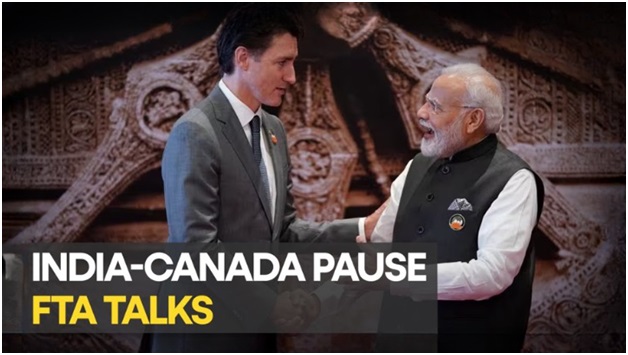
- 18 Sep 2023
Why is it in the News?
Negotiations for a bilateral free trade agreement between India and Canada have been temporarily halted. This decision followed Prime Minister Modi's concerns about anti-India activities by extremist groups in Canada, which he discussed with Canadian Prime Minister Justin Trudeau during the G20 Summit.
Context:
- Negotiations on the Comprehensive Economic Partnership Agreement (CEPA) between India and Canada have been temporarily suspended due to political differences.
- Talks are expected to resume once these issues are resolved.
Possible Reasons for the pause:
- Strained Relations: The relationship between the two countries has become tense due to concerns related to pro-Khalistan groups operating in Canada.
- Diplomatic Actions: In July, India summoned the Canadian envoy and issued a formal demarche after posters naming senior Indian diplomats in Canada surfaced.
- Strong Response: Following a meeting between Prime Ministers Modi and Trudeau during the G20 Summit, India released a strongly-worded statement.
India-Canada Relations:
- Diplomatic relations between India and Canada were formally established in 1947. However, the partnership took a significant step forward when it was elevated to a strategic level during Prime Minister Modi's visit to Canada in 2015.
Commercial Relations:
- Bilateral Trade: The economic relationship between the two nations has witnessed substantial growth. India has become Canada's 10th largest trading partner.
- Trade Figures: In the fiscal year 2022-23, India's total exports to Canada amounted to US$ 4.10 billion, showing an increase from US$ 3.76 billion in the previous year.
- Simultaneously, India's imports from Canada reached US$ 4.05 billion in 2022-23, up from US$ 3.13 billion in 2021-22.
- Key Exports and Imports: The bilateral trade consists of a range of items. India exports gems, pharmaceutical products, ready-made garments, among others.
- In contrast, India imports commodities like pulses, newsprint, wood pulp, asbestos, potash, iron scrap, copper, minerals, and industrial chemicals from Canada.
- Investment: Canadian Pension Funds have made cumulative investments of around US$ 55 billion in India.
- Additionally, the cumulative Foreign Direct Investment (FDI) from Canada since the year 2000 amounts to approximately US$ 4.07 billion.
- CEPA/EPTA Negotiations: In March 2022, both countries agreed to re-launch negotiations for the Comprehensive Economic Partnership Agreement (CEPA).
- Furthermore, they explored the possibility of an interim agreement called the Early Progress Trade Agreement (EPTA), which could bring mutual commercial benefits.
- Negotiations on CEPA and EPTA resumed in April 2022 and continued through nine rounds of talks until July of the same year.
Nuclear Cooperation:
- Canada's nuclear aid to India began in 1956 and saw collaboration until 1974, when India conducted its nuclear test, Smiling Buddha.
- Canada was among the earliest participants in India's nuclear power program, notably contributing to the construction of CIRUS, India's first research reactor.
- The restoration of nuclear cooperation between the two countries occurred in June 2010 with the signing of a Nuclear Cooperation Agreement (NCA).
Science and Technology:
- Bilateral collaboration extends to various sectors, including joint research projects in healthcare, agri-biotech, and waste management under the IC-IMPACTS program.
- Furthermore, the Department of Earth Science and Polar Canada initiated a program for the exchange of knowledge and scientific research focused on Cold Climate (Arctic) Studies.
Cooperation in Space:
- Notably, the commercial arm of the Indian Space Research Organization (ISRO), ANTRIX, has successfully launched several nanosatellites from Canada.
- In a significant milestone, ISRO included Canada's first Low Earth Orbit (LEO) satellite on its 100th satellite PSLV launch in January 2018.
Development Cooperation:
- After 55 years of bilateral programming in India with a total aid of $2.39 billion, Canada's bilateral development assistance program came to an end in 2006.
- This change resulted from a shift in Indian government policy regarding aid.
- Presently, Canada supports various projects in India through Grand Challenges Canada.
- The main programming sector of the Partnerships for Development Innovation Branch focuses on maternal, newborn, and child health, including support for early childhood development.
Cooperation in Indo-Pacific:
- In November 2022, Canada unveiled its Indo-Pacific strategy.
- Although Canada is the last G7 nation to formally embrace the concept of the Indo-Pacific, its strategy emphasizes India's strategic importance.
- The document highlights India as a key partner and calls for close collaboration with the country.
People-to-People Relation:
- Canada is home to one of the largest Indian diasporas globally, numbering 1.6 million individuals (comprising Persons of Indian Origin - PIOs and Non-Resident Indians - NRIs), which constitutes more than 4% of its total population.
- In the political arena, the present Canadian House of Commons, with a total strength of 338, includes 22 Members of Parliament of Indian origin.
- Additionally, there has been an encouraging cultural exchange, symbolized by a commemorative Diwali stamp jointly issued by Canada Post and India Post in 2017.
- Furthermore, Diwali celebrations on Parliament Hill have been a tradition for 18 years.
Challenges in India-Canada Relation:
- Khalistani Groups: A significant challenge lies in Canada providing a safe haven for separatist Khalistani groups.
- New Delhi has expressed concerns regarding the Liberal Party's alleged alignment with these groups for political support.
- Some members of the Sikh diaspora, backed by pro-Khalistan groups, are politically active in Canada.
- Anti-India Elements: Concerns have also arisen about Canada's perceived slow response to address anti-India elements operating on its soil.
- Instances such as the vandalization of a Hindu temple near Toronto and the defacement of Indian symbols with anti-India graffiti have added to these concerns.
- Diplomatic Tensions: Occasional diplomatic tensions have arisen due to issues such as Canadian comments regarding India's farmer protests and India's subsequent cancellation of diplomatic talks in response.
- India-Canada relations are multifaceted, encompassing trade, investment, scientific collaboration, and more. However, they also face challenges related to certain groups and diplomatic issues."
Apple support for NavIC prompts consideration of mandatory adoption and extra incentives by the government. (Indian Express)
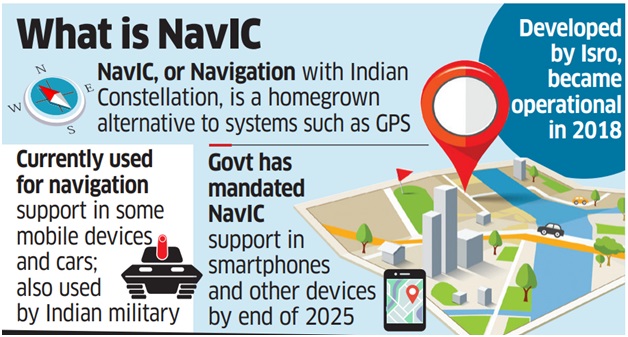
- 16 Sep 2023
Why it is in News?
- Following Apple's adoption of the NavIC navigation technology in select iPhone 15 models, the government is contemplating a mandate for all smartphones sold in India to incorporate this homegrown GPS alternative.
- According to the Ministry of Electronics and Information Technology (MeitY), this requirement would apply to all 5G phones by January 1, 2025, and other phones by December 2025.
Context:
- Currently, only a few smartphone brands like Poco, Vivo, and Xiaomi incorporate NavIC support.
- To encourage wider adoption of this indigenous navigation system, the government is contemplating additional incentives for smartphone manufacturers.
- These incentives may be included in the upcoming round of the production-linked incentive (PLI) scheme if manufacturers utilize chips designed or produced in India that support NavIC technology.
- As an example, the existing IT hardware PLI offers cashback incentives to companies employing India-designed or -manufactured chips in their systems.
- The Ministry of Electronics and Information Technology (MeitY) aims to make it nearly mandatory, similar to the automobile sector, for all GPS-enabled devices to include NavIC chipsets, alongside other technologies like GPS.
- Apple's recent announcement of NavIC support in its latest iPhone models marks the company's first inclusion of this technology, potentially driving its mainstream acceptance.
- The achievements of ISRO, including the successful lunar mission (Chandrayaan 3), the maiden solar mission (Aditya L1), and the growing recognition of NavIC technology, demonstrate India's expanding capabilities in the realm of space technology.
What is NavIC?
- NavIC, also known as the Indian Regional Navigation Satellite System (IRNSS), is an independent and self-reliant navigation satellite system developed by the Indian Space Research Organisation (ISRO).
- Initially approved in 2006 with a budget of $174 million, NavIC was anticipated to be completed by 2011 but became operational in 2018.
- Comprising seven satellites, NavIC covers the entirety of India's landmass and extends up to 1,500 km beyond its borders.
- Its primary objective is to reduce dependence on foreign navigation satellite systems, particularly for critical sectors.
- Currently, NavIC is utilized in India for:
- Public vehicle tracking, ensuring emergency alerts for fishermen in remote deep-sea areas with no terrestrial network connectivity.
- Tracking and disseminating information related to natural disasters.
- India's next goal is to integrate NavIC into smartphones, aligning with the draft satellite navigation policy of 2021, which outlines plans to expand coverage from regional to global.
What are the Benefits of a Regional Navigation System?
- India is the sole country with its regional satellite-based navigation system.
- Four global satellite navigation systems exist: the American GPS, Russian GLONASS, European Galileo, and Chinese Beidou.
- Japan also has a four-satellite system similar to India's GAGAN (GPS Aided GEO Augmented Navigation) that can enhance GPS signals over its territory.
- When fully operational, NavIC (supported by ground stations in Japan, France, and Russia for improved signal triangulation) will provide highly accurate open signals, up to 5 meters, and even more precise restricted signals (comparable to GPS's ~20 meters accuracy).
- Unlike GPS, NavIC employs satellites in high geostationary orbits, ensuring they remain fixed relative to Earth and continuously cover the same Earth region.
- NavIC signals approach India at a 90-degree angle, enhancing their reach to devices located in congested urban areas, dense forests, or mountainous terrain.
Comparison Between Old and New (2nd-Generation) NavIC Satellites:
- The existing seven satellites in the IRNSS constellation were launched using the Polar Satellite Launch Vehicle (PSLV), which is ISRO's reliable launch rocket.
- In 2018, the IRNSS-1I satellite joined the constellation, replacing an older, partially malfunctioning satellite. It was ISRO's ninth satellite for NavIC, although it's often considered the eighth due to the loss of IRNSS-1H in 2017 when the payload's heat shield failed to open on schedule.
- The 2nd-generation satellite, NVS-01, launched in May 2023, belongs to ISRO's NVS series and is notably heavier.
- NVS-01 features an onboard Rubidium atomic clock, a significant indigenous development for precise object location determination.
- Currently, only four IRNSS satellites offer location services, while others are designated for messaging services.
- The 2nd-generation satellites will introduce signals in a third frequency, L1 (in addition to the existing L5 and S frequencies), enhancing interoperability and supporting use in wearable devices.
- These upgraded satellites will also boast a longer mission lifespan, exceeding 12 years, in contrast to the 10-year mission life of the existing satellites.
Mains Question:
- How has the implementation of NavIC benefited India's navigation autonomy and strategic importance, and what are the key challenges and planned enhancements, particularly regarding mobile phone compatibility and signal security? (15M)
India's Supply Chain Opportunity (Indian Express)
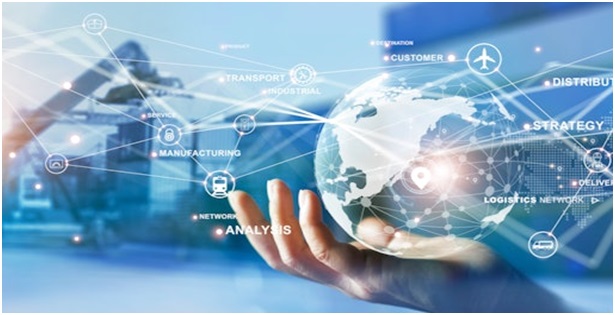
- 15 Sep 2023
Why it is in News?
Nevertheless, the declaration made during the G20 Leaders' Summit about the India-Middle East-Europe Economic Corridor (IMEC) has the capability to position India as a key player in the Asian segment of global supply chains. This holds substantial importance as part of endeavors to reduce reliance on supply chains centered around China.
What Are Supply Chains?
- A supply chain encompasses all the stages involved in delivering a final product or service to the customer, starting from raw material producers.
- It involves strategically locating various production stages (like design, production, assembly, marketing, and service activities) in a cost-effective manner.
- Global supply chains have been the dominant model of industrial production since the 1980s, shaping the trajectory and character of globalization and regionalization.
- These global supply chains are prevalent in a wide spectrum of industries, from simpler ones like textiles, food processing, and consumer goods to more intricate sectors such as automobiles, aircraft, machinery, electronics, and pharmaceuticals.
Why Are Global Supply Chains Shifting Away from China?
- Presently, China plays a significant role in global value chains, contributing to nearly 20% of global manufacturing trade and a substantial share of key inputs required for production within global value chains.
- Nevertheless, even before the Covid-19 pandemic, Western companies were progressively reducing their dependence on China as a sourcing market, and its appeal among Western buyers was waning.
- This shift was driven, in part, by increasing labor costs and supply chain challenges within China, along with concerns among investors about tighter regulation of foreign businesses.
- Additionally, the trade disputes between China and the US prompted multinational companies to reconsider their global sourcing strategies.
- Certain segments of Chinese supply chains, especially those reliant on labor-intensive processes, were relocating to more cost-effective locations.
- However, complete relocation from China is challenging due to the substantial costs associated with shifting supply chains, including establishing new facilities and recruiting and training workers, among other factors.
Why are India and Southeast Asia Considered Favorable Supply Chain Destinations?
- Southeast Asia has been successful in luring foreign companies due to its combination of low labor costs, tax incentives, and enhanced logistical capabilities.
- Notably, countries like Vietnam and Thailand have emerged as prominent choices for supply chain relocation.
- India, however, is poised to become an accompanying manufacturing hub in Asia alongside China by leveraging foreign technology transfers and creating value-added employment opportunities. This is evident in various developments:
- Increased production of iPhones within India.
- Early-stage technology transfer for the technologically advanced Mercedes Benz EQS to India.
- Foxconn Technology Group's establishment of a chip-making fabrication plant in Gujarat.
- India's existing manufacturing sectors, including automobiles, pharmaceuticals, and electronics assembly, already possess sophistication and are likely to excel in this competition.
- Foreign investors are drawn to India due to both geopolitical and economic considerations.
- India's services sector, encompassing ICT, back-office functions, financial and professional services, as well as transport and logistics, is also positioned for success.
Initiatives Taken by India to Strengthen its Supply Chain Network:
- Since 2022, the Indian government has prioritized preferential trade through various bilateral agreements with trading partners.
- The UAE-India Comprehensive Economic Partnership Agreement became effective in May 2022.
- Ongoing discussions aim to finalize the Australia-India free trade agreement (FTA) by the close of 2023. Negotiations are also underway for UK-India and EU-India FTAs.
- The Indian Prime Minister's visit to Washington DC in June 2023 underscored the pivotal role of supply chains in India-United States relations.
- These new agreements with Western trading partners signify a commitment to extensive economic integration, surpassing India's previous FTAs, which primarily focused on goods trade and related measures.
Path Ahead for India - Drawing Lessons from China's Success:
- Encouraging foreign direct investment (FDI) with an export focus remains a key strategy for engaging in supply chains.
- Local businesses must devise strategic approaches to integrate into global supply networks.
- Large conglomerates can allocate resources and costs effectively among their business units.
- Small and medium-sized enterprises (SMEs) can play pivotal roles as industrial suppliers and subcontractors for major exporters.
- Strategic moves such as mergers, acquisitions, and collaborations with multinational corporations and prominent domestic enterprises are sensible steps.
- Investing in domestic technological capabilities to meet international benchmarks for price, quality, and timeliness is crucial.
- Identifying and targeting multinational corporations involved in industries where India holds a potential comparative advantage, coupled with improved coordination between central and state governments, is essential.
- Investing in higher education in fields like science, technology, engineering, and mathematics is a forward-looking approach.
- Caution should be exercised when contemplating the adoption of China's interventionist state model, as it carries significant risks of government failures.
- Engaging with think tanks to gain insights into effective strategies is a prudent course of action.
- India stands at a pivotal moment in history to foster industrialization in South Asia, which would enhance regional stability, create employment opportunities, and reduce susceptibility to Chinese influence.
- To promote regional supply chains, the Indian government should consider the following policy actions:
- Expanding the Make in India Programme into a broader Make in South Asia Programme.
- Establishing a comprehensive bilateral Free Trade Agreement (FTA) with Bangladesh.
- Enhancing the Indo-Sri Lanka FTA to bolster regional trade and investment based on established rules.
- Without forging connections within South Asia, India's appeal to the Global South remains limited. The emerging supply chain opportunities with the United States offer India a promising pathway to embark on its journey of global integration, while maintaining a 'Neighbourhood First' approach.
Latest NSO Data on Inflation in India (The Hindu)
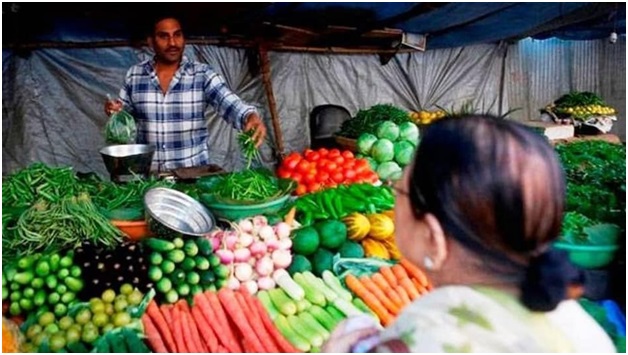
- 14 Sep 2023
Why it is in News?
- Recent data from the National Statistical Office (NSO) reveals that India's retail inflation rate decreased to 6.83% in August.
- This decline came after hitting a 15-month high of 7.44% in July 2023, primarily because of falling prices of food items, particularly vegetables.
- However, it's worth noting that the inflation rate still remains above the upper limit of the Reserve Bank of India's (RBI) medium-term inflation target range of 4+/-2%.
Key Points from the Recent NSO Data:
- In August 2023, retail inflation stood at 6.83%, marking the fourth instance this year and the seventh since August 2022 where it exceeded the upper limit of the target.
- Policymakers are increasingly concerned about high inflation rates.
- In its recent monetary policy review, the RBI maintained the key repo rate at 6.50% but raised the inflation projection for FY2024 from 5.1% to 5.4%.
- In the Index of Industrial Production (IIP), manufacturing showed improvement, rising to 141.2 in July from 135 a year ago and 141.1 in the previous month.
- Of concern, consumer durables contracted by 2.7% year-on-year in July 2023, indicating weaknesses and imbalances in consumption demand.
Key Insights from the Recent NSO Data:
- Consumer Confidence Declines: In August 2023, consumer sentiment dropped by 1.5%, breaking a streak of continuous increases since January 2023.
- This decline can impact the Indian economy and businesses, particularly in anticipation of the upcoming festive season.
- A significant contributor to this drop is a decrease in consumers' intentions to buy consumer durables like cars and TVs.
- This pessimism is not only due to stagnant perceived incomes but also concerns about future earnings.
- Persistent Inflation: According to RBI projections, inflation is expected to remain above 5% until the first quarter of 2024-25, with the likelihood of reaching 6.2% in the current quarter (July-September), which is beyond the RBI's comfort zone.
- Although overall food inflation has moderated, certain food items like cereals, pulses, and milk are experiencing upward price momentum.
- Factors such as irregular rainfall and low reservoir levels pose further risks to food inflation.
- Additionally, the recent surge in global crude oil prices is a cause for concern. However, the continuing deflation in the Wholesale Price Index (WPI) will have a delayed impact on Consumer Price Index (CPI) inflation.
- The government's decision to reduce cooking gas prices by Rs 200 per cylinder is expected to benefit domestic LPG consumers and those under the Pradhan Mantri Ujjwala Yojana (PMUY).
- India's GDP Growth Prospects: India's potential GDP growth rate has steadily decreased from around 8% just before the Global Financial Crisis of 2008-09 to 6% before the Covid pandemic.
- The potential GDP growth rate represents the rate at which an economy can expand without causing high inflation.
- The temporary increase in India's GDP growth rates in 2020-21 was primarily due to a lower base.
- The Indian economy faces various challenges, including a slowing global economy, elevated oil prices, and climate change. Economists estimate that, under a business-as-usual scenario, India's economy cannot grow more than 5% over the next decade.
- While this growth rate may be attractive from a global perspective, it may not be sufficient to meet the employment needs of India's large youth population.
What is Inflation?
- Inflation signifies an increase in prices, resulting in a decrease in the purchasing power of money over time.
- The rate at which purchasing power diminishes is measured by tracking the average price increase of a specific set of goods and services over a specified period.
- This price hike, typically expressed as a percentage, signifies that a unit of currency can purchase fewer goods and services compared to previous periods.
- In contrast, deflation occurs when prices fall, leading to an increase in purchasing power.
What are the causes of inflation?
- Demand-Pull Inflation: This occurs when the demand for goods and services exceeds their supply.
- When demand is high and supply is limited, businesses often raise prices, leading to inflation.
- It's often associated with strong economic growth.
- Cost-Push Inflation: In this scenario, rising production costs, such as increased wages or the cost of raw materials, force businesses to raise prices to maintain their profit margins.
- Oil price spikes are a classic example of cost-push inflation.
- Built-In Inflation: Sometimes called wage-price inflation, this happens when workers consistently demand higher wages to keep up with rising prices.
- Businesses then raise prices to cover increased labor costs, creating a cycle of inflation.
Categories:
- Consumer Price Index (CPI): This index calculates the weighted average of prices for a basket of goods and services at the consumer or retail level.
- Wholesale Price Index (WPI): The WPI monitors price changes for goods in stages before reaching the retail level.
Inflation Targeting in India:
- The RBI Act of 1934 establishes a legal and institutional framework for ensuring price stability while also considering growth objectives.
- In 2016, the Finance Act amended the RBI Act to establish a Monetary Policy Committee (MPC).
- The MPC issues a bi-monthly Monetary Policy Report to set India's benchmark interest rate, enhancing transparency and accountability in the country's monetary policy.
- The current mandate of the MPC is to maintain an annual inflation rate of 4% (with a tolerance range of +/-2%).
- If inflation exceeds this range for three consecutive quarters, the committee is accountable to the Government of India.
Mains Question:
- How does the RBI's inflation targeting framework impact India's economic stability and growth? Discuss the tools and effectiveness of RBI's strategies in controlling inflation. (10 M)
Ridding India of Food Insecurity (The Hindu)
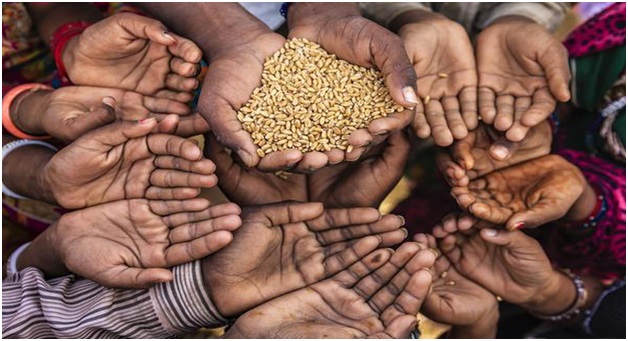
- 13 Sep 2023
Why it is in News?
- While India is currently the world's fastest-growing major economy, it is also grappling with a rapid increase in food-price inflation.
- The surge in food prices began to intensify notably in 2019 and has continued to rise in most subsequent years.
- In July of this year, annual inflation surpassed 11%, reaching its highest level in the past decade.
- One consequence of this sustained high food-price inflation is the possibility that a portion of the population may encounter difficulties in accessing food with sufficient nutritional value.
Key Findings of Concern:
- The 'State of Food Security and Nutrition in the World' report by the Food and Agriculture Organization (FAO) assesses the percentage of people in different countries who cannot afford a nutritious diet.
- Approximately 74% of the population is unable to afford a healthy diet.
- This likely results in decreased food consumption due to reduced purchasing power.
- Food prices in India have been on a consistent upward trend since 2019, with annual inflation exceeding 11% in July 2023, the highest rate in a decade.
- There has been a notable increase in the prevalence of anaemia, with over 50% of adult women estimated to be affected according to the latest National Family Health Survey conducted between 2019 and 2021.
- Critics argue that macroeconomic policies, including the Reserve Bank of India's focus on inflation control through measures like inflation targeting, are ineffective in addressing food inflation, which is primarily driven by supply-side factors.
Importance of Food Security:
- Enhanced Health and Nutrition: Food security plays a crucial role in improving the health and well-being of individuals by preventing malnutrition and its associated health issues, including stunted growth, cognitive impairment, and increased susceptibility to diseases.
- It's worth noting that malnutrition is responsible for the deaths of approximately 3.1 million children each year, accounting for nearly half of all child deaths under the age of 5.
- Economic and Social Stability: Food security contributes to the economic and social stability of individuals and nations by enabling increased productivity, income generation, and participation in trade.
- According to a World Bank study, the global cost of undernutrition, in terms of lost productivity and human capital, amounts to USD 3.5 trillion per year.
- Additionally, a United Nations report highlighted that food insecurity played a pivotal role in 58% of conflicts between 2017 and 2019.
- Poverty Alleviation: Food security is instrumental in reducing poverty as it enables people to afford and access nutritious food while also investing in other essential needs such as education and healthcare.
- These factors help break the cycle of poverty.
- National Security: Food security bolsters national security by ensuring a reliable food supply that is not vulnerable to external factors like global food prices or supply chain disruptions.
- Food insecurity can make nations susceptible to such factors, compromising their sovereignty.
- Sustainable Development: Food security aligns with sustainable development goals, particularly Goal 2: Zero Hunger.
- It also supports related goals such as poverty reduction, improved health, gender equality, and environmental sustainability, contributing to a holistic approach to sustainable development.
Causes of Food Insecurity:
- Impact of Russia-Ukraine Conflict: The Russia-Ukraine conflict has disrupted the global supply chain due to trade-related policies imposed by countries, exacerbating the global food crisis.
- Several nations have implemented food trade restrictions to bolster domestic supply and reduce prices.
- Rising Domestic Inflation: Many countries are grappling with domestic food inflation, which has intensified the issue of food insecurity.
- For instance, India has imposed bans on wheat and rice exports to support its domestic population.
- Climate Variability and Extremes: Climate change has significantly affected the availability and quality of critical resources like water, land, and biodiversity essential for food production.
- It has also led to shifts in the patterns and severity of pests, diseases, and natural disasters, resulting in reduced crop yields and livestock productivity.
- The Global Report on Food Crises highlights that weather and climate extremes were the primary drivers of acute food insecurity in 12 countries in 2021, impacting nearly 57 million people.
- Economic Slowdowns and Downturns: Economic slowdowns have diminished the income and job prospects of vulnerable populations, who typically allocate a substantial portion of their income to food purchases.
- These economic shocks have disrupted both the supply and demand for food, leading to increased food prices and reduced food quality.
Learning from the Green Revolution:
- India boasts a rich historical backdrop of the Green Revolution, a transformative period during the 1960s.
- The government initiated a supply-side approach, providing farmers with high-yield seeds, accessible credit, and guaranteed prices through procurement.
- This initiative achieved remarkable success, swiftly liberating India from dependence on food imports and fulfilling its ambition of self-sufficiency.
- However, certain strategic errors were made during this period.
- Excessive use of chemical fertilizers resulted in soil degradation.
- An overemphasis on procurement prices, rather than prioritizing productivity to enhance farm incomes, contributed to inflation.
- The policy primarily focused on cereals, neglecting pulses, a vital source of protein for the majority of Indians.
The Path Ahead: Suggested Actions
- Enhanced Agricultural Investment: Evaluate and optimize public expenditure on irrigation to improve its efficiency.
- Revitalize Research Institutes: Revamp India's network of public agricultural research institutes to rekindle their pivotal role, reminiscent of their contributions during the 1960s.
- Reinvigorate the Role of Local Village Representatives (Gram Sevak): Empower and elevate the role of the gram sevak in villages, making them instrumental in disseminating best agricultural practices.
- Boost Protein-Based Crop Production: Implement a comprehensive program to significantly increase protein production by incorporating various initiatives.
- Foster Cooperative Federalism: Encourage states to actively contribute to enhancing agricultural productivity rather than relying solely on food allocations from the central pool for their Public Distribution System.
- Ensure Permanent Access to a Balanced Diet: Prioritize measures consistent with ecological sustainability to ensure that all Indians have continuous access to a nutritious diet.
- Supply-Side Interventions: Implement interventions on the supply side to stabilize food prices by improving land yield.
- Focus on Cost Reduction: Concentrate on the specific objective of reducing food production costs.
- Multifaceted Approach: Extend irrigation coverage to 100% of the net sown area, eliminate land leasing restrictions, accelerate agricultural research efforts, and reinstate agricultural extension services.
Mains Question:
- Examine the key agricultural issues in India today, encompassing food security, sustainability, and economic stability. Propose a holistic approach that integrates government funding, research, inter-state collaboration, and supply-side interventions to pave the way for a resilient and prosperous future in Indian agriculture. (15M)
Strategic Partnership Council (SPC) Meeting Between India & Saudi Arabia (Indian Express)
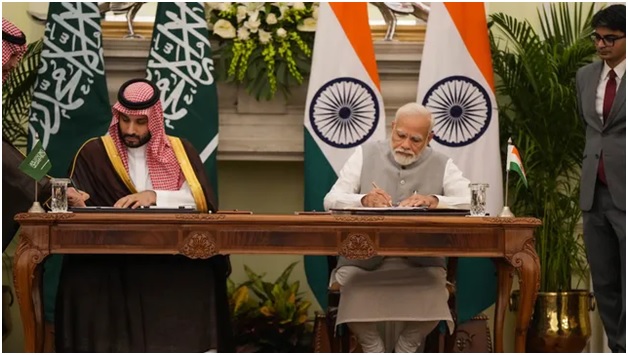
- 12 Sep 2023
Why it is in News?
Saudi Arabia’s Crown Prince Mohammed bin Salman Al Saud and Prime Minister Narendra Modi held extensive talks on Monday, agreeing to expand trade and security ties. The leaders also co-chaired the first summit-level meeting of the India-Saudi Arabia Strategic Partnership Council (SPC).
What is India-Saudi Arabia Strategic Partnership Council (SPC)?
- The agreement to create the SPC was inked during Prime Minister Modi's official visit to Saudi Arabia in October 2019. This partnership was conceived to establish a top-tier council to guide and enhance the Indo-Saudi relationship.
- Key Pillars:
- The SPC operates through two primary pillars:
- Committee on Political, Security, Social, and Cultural Cooperation.
- Committee on Economy and Investments.
- These sub-committees engage at four distinct levels:
- Summit Level (Involving the Prime Minister and Crown Prince)
- Ministerial Level
- Senior Officials' Meetings
- Joint Working Groups (JWGs)
Key Highlights From the Recent Meeting Between Saudi's Crown Prince Mohammed bin Salman and PM Modi:
- Notable Developments:
- Advancing the $50-billion West Coast refinery project, a massive undertaking with a capacity of 60 million tonnes.
- It will be a refinery and petrochemical complex situated on the Maharashtra coast.
- Identifying energy, defense, semiconductors, and space as sectors where cooperation will be intensified.
- Recognizing various other areas of collaboration, including security, education, technology, transportation, healthcare, tourism, and culture.
- Expanding the Relationship:
- Both parties agreed to transform their existing hydrocarbon relationship into a more comprehensive energy partnership.
- Signed Agreements:
- Additionally, eight agreements were formally signed to enhance cooperation in various domains, encompassing digitization and investment.
India-Saudi Arabia Bilateral Relations:
- India and Saudi Arabia share warm and amicable bilateral relations that are a testament to their deep-rooted economic and socio-cultural connections spanning centuries.
- These relations were formalized with the establishment of diplomatic ties in 1947, and since then, both nations have engaged in high-level exchanges and visits.
The Economic Cooperation Between India and Saudi Arabia:
Trade:
- In the fiscal year 2022-23, the bilateral trade volume between India and Saudi Arabia surged to a historic high of $52.75 billion.
- India's exports to Saudi Arabia saw significant growth, reaching $10.7 billion, compared to $8.8 billion in 2021-22.
- India stands as the second-largest trading partner for Saudi Arabia, while Saudi Arabia ranks as the fourth-largest trading partner for India.
Investment:
- Indian investments in the Kingdom of Saudi Arabia have now reached approximately USD 2 billion.
- Saudi Arabia, on the other hand, is recognized as the 18th largest investor in India, with investments amounting to $3.14 billion as of March 2022.
- During the visit of the Saudi Crown Prince to India in February 2019, he made a significant announcement of the Kingdom's plans to invest a substantial sum of US $100 billion across various sectors in India.
Energy Partnership Between India and Saudi Arabia:
Vital Energy Collaboration:
- Energy collaboration stands as a foundational element of the bilateral relationship between India and Saudi Arabia, playing a crucial role in ensuring India's energy security.
- Saudi Arabia maintains its position as one of India's key partners in the sourcing of crude oil and petroleum products.
Crucial Import Destination:
- During the fiscal year 2022-23, Saudi Arabia retained its status as India's third-largest supplier of crude oil and petroleum products.
- India imported a substantial 39.5 million metric tonnes (MMT) of crude oil from Saudi Arabia in FY23, constituting 16.7% of its total crude oil imports.
LPG Contribution:
- India also benefitted from Saudi Arabia as a significant source of LPG (liquefied petroleum gas) imports, with 7.85 MMT of LPG imported from Saudi Arabia in FY23. This accounted for 11.2% of India's total petroleum product imports during that fiscal year.
Defense Partnership Between India and Saudi Arabia:
High-Level Engagement:
- In a significant diplomatic move, General Manoj Mukund Naravane, the Chief of Naval Staff of India, paid a landmark visit to Saudi Arabia in December 2020.
Naval Exercises:
- The two nations have successfully conducted two editions of their bilateral naval exercise titled 'Al Mohed al Hindi.'
Collaborative Defense Endeavors:
- India and Saudi Arabia are actively engaged in fostering collaboration within the realm of defense industries and capacity building, further strengthening their partnership in the defense domain.
Indian Community Living in Saudi Arabia:
- Prominent Expatriate Community:
- The Indian community in Saudi Arabia is a substantial one, numbering around 2.2 million people.
- This makes it the largest expatriate community within the Kingdom.
- Economic Contribution:
- Indians constitute approximately 7% of Saudi Arabia's total population, and they play a significant role in driving the country's economic growth.
- Migration Process Enhancement:
- During Prime Minister Modi's visit to Riyadh in October 2019, a noteworthy development was announced. India's e-Migrate system would be integrated with Saudi Arabia's e-Thawtheeq system, streamlining the migration process for workers.
- Hajj Pilgrimage:
- The annual Hajj pilgrimage holds immense importance in the Indo-Saudi bilateral relationship.
- During the visit of the Saudi Crown Prince to New Delhi in February 2019, it was revealed that India's Hajj quota would be expanded by 24,975 in 2019, allowing 200,000 Indians to partake in the Hajj pilgrimage in August 2019.
Recent Diplomatic Engagements:
- In 2019, the then Indian Prime Minister, Manmohan Singh, undertook a significant visit to Saudi Arabia, culminating in the signing of the 'Riyadh Declaration.'
- This landmark agreement elevated the bilateral relationship between the two nations to the status of a 'Strategic Partnership.'
- During Prime Minister Modi's visit to Saudi Arabia in 2016, King Salman bestowed upon him the Kingdom's highest civilian honor.
- In February 2019, Crown Prince Salman of Saudi Arabia visited India and announced the Kingdom's decision to invest approximately US$100 billion in India.
Later in the same year, during Prime Minister Modi's visit to Riyadh, the two nations signed the Strategic Partnership Council (SPC) Agreement, marking a pivotal moment in their diplomatic relations.
African Union Joined G20 (G20 Becomes G21) (The Hindu)
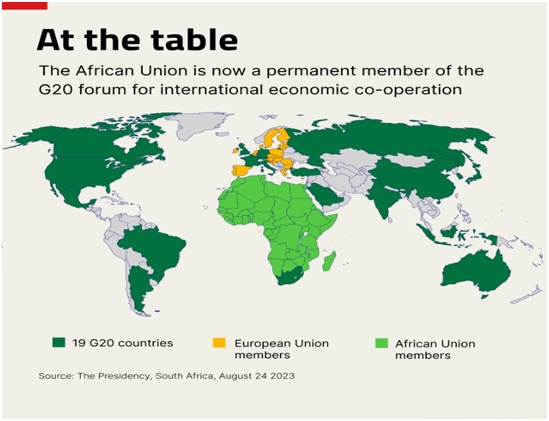
- 11 Sep 2023
Why it is in News?
At the 18th G20 Summit in India, the African Union (AU) became a new member of the G20, just three months after India proposed the idea of their inclusion.
Context:
- In June of this year, Prime Minister Modi suggested to G20 leaders that the African Union should be granted full membership at the upcoming G20 Summit in Delhi.
- This idea was born after the 'Voice of the Global South' Summit in January 2023, which saw participation from most of the African Union's 55 member countries.
- Up to that point, only one country from the African Union, South Africa, was a part of the G20.
- Several African leaders had emphasized that Europe had representation from five countries and the European Union (EU) within the G20, and they believed the African Union deserved similar representation.
What is the African Union (AU)?
- The African Union (AU) is a group of 55 member states representing the countries of the African Continent.
- In essence, it's a union that has various objectives aimed at enhancing the well-being of its member countries, both on their own and as a collective.
- It was formally established in 2002, succeeding the Organisation of African Unity (OAU, 1963-1999).
- The AU's main offices are located in Addis Ababa, Ethiopia.
Vision of the African Union (AU):
- The AU is driven by its vision of "A united, prosperous, and peaceful Africa, led by its own people and serving as a dynamic force on the global stage."
- To accomplish this mission, a target year of 2063 has been established, marking the 100th anniversary of the OAU's establishment.
- Agenda 2063's key objectives include:
- Fostering prosperity in Africa through inclusive growth and sustainable development.
- Achieving a politically unified and integrated continent, inspired by the principles of Pan-Africanism.
- Cultivating a Africa characterized by good governance, democracy, human rights, justice, and the rule of law.
- To realize the aims outlined in Agenda 2063, the AU has devised a series of five 10-year plans, with the initial plan spanning from 2014 to 2023.
Objectives of the African Union (AU):
- The AU dedicates its efforts and resources to fostering stronger unity and solidarity among African nations and their citizens.
- Its goal is to expedite the political and socio-economic integration of the continent, addressing the diverse social, economic, and political challenges faced by African nations.
- Additionally, the AU actively works to promote peace, stability, and security throughout the region.
The Role of the AU in Promoting Peace on the Continent:
- The AU strongly believes that resolving conflicts is essential for achieving prosperity.
- In pursuit of this goal, it established a Peace and Security Council in 2004.
- This council has the authority to intervene in conflicts, replacing the principle of non-interference with one of non-indifference.
- It can deploy military forces in situations involving genocide and crimes against humanity and can authorize peacekeeping missions.
- The AU also oversees the New Partnership for Africa's Development (Nepad), an anti-poverty plan that offers a partnership with the West.
- It promotes good political and economic practices in exchange for increased aid and investment.
- Many of the AU's peacekeeping missions have been instrumental in helping governments combat terrorism across Africa, from the Sahel to northern Mozambique.
- Diplomatic efforts by the AU have also successfully resolved conflicts in Africa, such as brokering a peace deal between the Ethiopian Government and the Tigray People's Liberation Front (TPLF) in South Africa in 2022.
- Another notable achievement is the establishment of the African Continental Free Trade Area (AfCFTA), which became operational in 2021.
- With 54 member countries as signatories, AfCFTA is the world's largest new free trade area since the creation of the WTO in 1994.
- Its aim is to boost intra-African trade by implementing deeper trade liberalization and improved regulatory harmonization.
- The AfCFTA is projected to increase Africa's income by $450 billion by 2035 and elevate intra-African exports by more than 81%.
Limitations of the African Union (AU):
- The AU has faced challenges in preventing coups in Africa, with over 200 coups occurring on the continent since the 1960s. Some of the most recent ones happened in Gabon and Niger.
- Another issue is the AU's struggle to ensure that its member nations fulfill their annual financial obligations.
- This has led to financial constraints, forcing the organization to rely on external funding, which can affect its independence.
Swachh Vayu Sarvekshan 2023 (Indian Express)
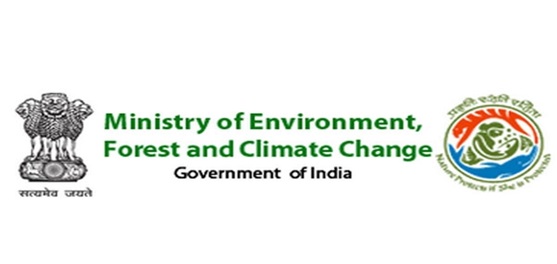
- 09 Sep 2023
Why in the News?
The second year of the Swachh Vayu Survekshan, carried out by the ministry based on self-assessments submitted by 130 identified cities under the National Clean Air Programme, saw Agra in Uttar Pradesh securing the second rank, followed by Thane in Maharashtra on the third spot.
About Swachh Vayu Sarvekshan:
- In September 2022, the Union Ministry of Environment, Forest, and Climate Change published rules for 'Swachh Vayu Sarvekshan - Ranking of Cities' as part of the National Clean Air Programme (NCAP).
- The idea behind Swachh Vayu Sarvekshan is to rank 131 cities in India based on how well they follow City Action Plans from NCAP.
- These plans are meant to reduce air pollution by up to 40% by 2025-26.
How Swachh Vayu Sarvekshan works?
- The Swachh Vayu Sarvekshan methodology categorizes 131 cities into three groups based on population:
- The first group includes 47 cities with a population exceeding 10 lakhs.
- The second group comprises 44 cities with a population ranging from 3 to 10 lakhs.
- The third group consists of 40 cities with a population less than 3 lakhs.
- Cities are required to perform self-assessments using the framework available on the PRANA online portal, which stands for "Portal for Regulation of Air-pollution in Non-Attainment Cities."
- The assessment focuses on key components, including solid waste management, road dust control, management of construction and demolition waste, and the control of emissions from vehicles and industries.
- Cash awards will be given to the top three performing cities in each group, fostering a spirit of competitive federalism.
- This Sarvekshan serves as a valuable tool for cities to plan and execute actions aimed at improving air quality.
- It's important to note that this ranking is not based on direct measurements of air quality parameters but on the proactive measures taken by cities to enhance air quality across various domains.
About Swachh Vayu Sarvekshan 2023:
- The Union Environment, Forest and Climate Change Minister, Bhupender Yadav, recently announced awards for the Swachh Vayu Sarvekshan 2023, which is a survey aimed at assessing clean air.
- In the first category, which includes cities with a population of more than 10 lakhs, Indore secured the top spot, followed by Agra and Thane.
- Indore achieved the highest score of 187 out of 200.
- In the second category, which covers cities with populations between 3-10 lakhs, Amravati took the first position, with Moradabad and Guntur following closely.
- Similarly, in the third category, which comprises cities with populations less than 3 lakhs, Parwanoo (Himachal Pradesh) secured the first rank, with Kala Amb (Himachal Pradesh) and Angul (Odisha) in the second and third positions, respectively.
- The assessment considered eight categories, including biomass and municipal solid waste burning, road dust, dust from construction and demolition waste, vehicular emissions, emissions from industries, other emissions, IEC activities (public awareness), and improvement in PM10 concentrations.
- Urban local bodies submitted self-assessment reports with supporting documents to determine the rankings.
- Notably, in the 2022 survey, Lucknow, Prayagraj, and Varanasi were the top three cities in the million-plus population category, but they ranked lower in the current year's survey.
What is National Clean Air Programme?
- The National Clean Air Programme (NCAP), initiated in 2019, stands as India's primary initiative to improve air quality significantly.
- This program was introduced as a comprehensive, time-bound, national-level strategy aimed at addressing the widespread issue of air pollution throughout the country.
- The primary objective is to achieve a reduction of 20% to 30% in Particulate Matter concentrations by 2024, with 2017 serving as the baseline year.
- NCAP has identified 132 non-attainment cities nationwide. These cities have consistently failed to meet the National Ambient Air Quality Standards (NAAQS) for over five years.
- The Ministry of Environment, Forest, and Climate Change serves as the nodal ministry responsible for overseeing NCAP's implementation.
Measurement of Unemployment in India? (The Hindu)

- 08 Sep 2023
Why in the News?
- Based on the Periodic Labour Force Survey (PLFS), India's unemployment rate reached a peak of 6.1% in 2017, which was the highest ever recorded.
- However, the latest PLFS data from 2021-22 indicates a decrease to 4.1% in unemployment.
- This article underscores the challenges in accurately measuring unemployment in India.
- While there has been a reduction in unemployment from 2017 to 2022, it is still higher than the rates observed in some developed economies, such as the United States, where it hovers around 3.5%.
What is the Meaning of Unemployment:
- As per the International Labour Organisation (ILO), unemployment involves being without a job, being ready to accept a job, and actively seeking employment.
- In other words, if someone loses their job but doesn't actively seek another, they are not considered unemployed. Hence, unemployment is distinct from being without a job.
Measuring the Unemployment Rate:
- The unemployment rate is calculated by dividing the number of unemployed individuals by the total labor force.
- The labor force is the combined count of both employed and unemployed individuals.
- People who are neither employed nor unemployed, like students and those involved in unpaid domestic work, are categorized as outside the labor force.
- It's important to note that the unemployment rate may also decrease when an economy doesn't create sufficient jobs or when individuals choose not to actively seek employment.
Challenges in Measuring Unemployment in India:
- Cultural Factors: Social norms and cultural constraints influence job search decisions in developing economies like India.
- A definition of unemployment that relies on active job seeking may underestimate the true situation.
- Informal Work: In contrast to developed economies, individuals in India often hold informal, intermittent jobs.
- This means someone might be unemployed one week but engaged in various roles over time, such as casual labor or farming.
- Varying Methodologies: Different organizations use distinct methodologies to measure unemployment.
- For instance, the Centre for Monitoring Indian Economy categorizes individuals based on their daily activity preceding the interview, leading to variations in unemployment rates and labor force participation rates.
- Data Timing: Timing can also impact unemployment rates.
- For example, the lockdown in March 2020 had a profound effect on the Indian economy, but this disruption was not immediately reflected in the PLFS unemployment rates, which cover a period from July of one year to June of the next.
- Trade-offs: Developing economies face trade-offs in choosing reference periods for data collection.
- Shorter periods yield higher unemployment rates and lower employment rates, while longer periods tend to show the opposite.
- This dilemma is less common in developed nations with more consistent, year-round employment.
Differences in Rural and Urban Unemployment Rates in India:
- The lenient criteria for categorizing someone as employed contribute to the lower unemployment rates in rural regions compared to urban areas.
- Agricultural economies provide individuals with opportunities like family farming or occasional agricultural work, increasing the likelihood of finding some form of employment in rural settings.
- While these definitions may seem to 'underestimate' unemployment, they were primarily crafted to account for the substantial informal economy prevalent in these areas.
Classifying Employment Status in India:
- The National Sample Survey Organisation (NSSO) employs two primary methods for this purpose: Usual Principal and Subsidiary Status (UPSS) and Current Weekly Status (CWS).
- UPSS determines an individual's primary employment status based on their predominant activity during the previous year, whether employed, unemployed, or out of the labor force.
- For instance, even if someone's principal status is not that of a worker, they would still be considered employed under UPSS if they engaged in economic activity in a subsidiary role for a period of not less than 30 days.
- CWS, on the other hand, uses a shorter reference period of one week. An individual is counted as employed if they worked for at least one hour on at least one day during the seven days leading up to the survey date.
- UPSS unemployment rates consistently tend to be lower than CWS rates because it is more likely that individuals will find employment over the course of a year compared to just one week.
Unemployment is becoming a significant issue in the upcoming election. To address it effectively, it's crucial to grasp how unemployment is defined and measured in a developing economy like India.
Mains Question:
- Discuss the challenges associated with measuring unemployment in India and how these measurement methods impact our understanding of the employment situation in the country. (15M)
At G20, the Eend of Old Multilateralism – and the Beginning of a New Order (Indian Express)
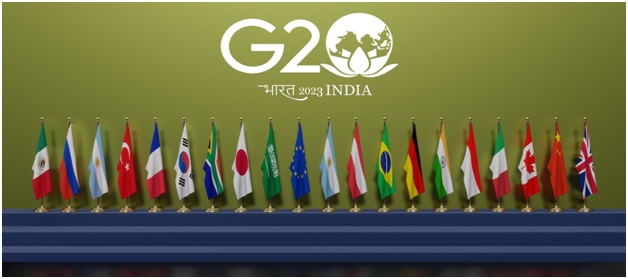
- 07 Sep 2023
Why in the News?
Delhi’s current emphasis is on building bridges between developing and developed countries. Many in the developed world are waking up to the importance of greater cooperation between the North and the South amidst the breakdown of relations between the East and the West.
What are the factors contributing to the weakening of global cooperation in the post-Cold War era?
- Russian Conflicts: International relations have been strained due to Russia's aggressive actions, notably its annexation of Ukraine's Crimean Peninsula in 2014 and the ongoing conflict with Ukraine.
- China's Territorial Ambitions: Concerns have arisen from China's territorial disputes with neighboring Asian countries, including India, Japan, the Philippines, and Vietnam.
- Economic Leverage: China's attempts to leverage its economic power for political and strategic purposes have led to growing distrust among nations worldwide.
- Change in Chinese Policies: A shift in Chinese policies under Xi Jinping, departing from the peaceful periphery and shared prosperity approach of the 1980s, has had adverse effects on regional and global institutions.
How is Asia reacting to China's actions?
- Security Institutions: New security coalitions such as the Quad, comprising India, the United States, Japan, and Australia, have been formed to counterbalance China's growing influence in the region.
- AUKUS Pact: The establishment of the AUKUS alliance, which includes Australia, Britain, and the United States, is a direct response to China's expanding military presence in the area.
- Questioning ASEAN's Role: China's assertive territorial expansion has raised concerns about the effectiveness of ASEAN-led regional organizations in maintaining stability.
- Bilateral Relationships: Many Asian nations are reinforcing bilateral ties to deter China's unilateral actions. For instance, the trilateral agreement involving the United States, Japan, and South Korea aims to enhance security in Northeast Asia.
- Economic Diversification: Countries like Japan and the United States are actively seeking to reduce their economic reliance on China by diversifying their trade partnerships.
How is India's role undergoing transformation?
- Central Player: India is increasingly assuming a central role in shaping both regional and global dynamics, evident in its active participation in forums such as the Indo-Pacific Quadrilateral Forum.
- G20's Evolution: India is advocating for the G20 to address the concerns of the Global South, indicating its aspiration to have a more significant role in global economic discussions.
- Shifting Alliances: While historically aligned with Moscow and Beijing for a multipolar world, India's focus has shifted due to China's growing assertiveness, leading it closer to nations like Australia, Japan, and the United States.
- Embracing the Indo-Pacific: India has embraced the Indo-Pacific concept and revitalized the Quad alliance to counterbalance China's influence in the region.
What are the key elements of India's new approach to multilateralism?
- Quad Collaboration: During the Jakarta summit, the Prime Minister of India emphasized the Quad's role in complementing ASEAN's efforts and promoting regional stability.
- Re-globalization Focus: India's External Affairs Minister, S Jaishankar, advocates for a diversified and democratic form of globalization that moves away from a production model centered around China.
- Collective Solutions: Despite the challenges faced in multilateralism, India remains committed to seeking collective solutions to various global issues, including the modernization of the global tax regime.
Global South Concerns: India places a strong emphasis on addressing the concerns of the Global South within the G-20 agenda, with a goal of fostering greater cooperation between developed and developing nations, rather than reviving past confrontational politics.
SBI allows interoperability of UPI and Central Bank Digital Currency (CBDC) (The Economic Times)
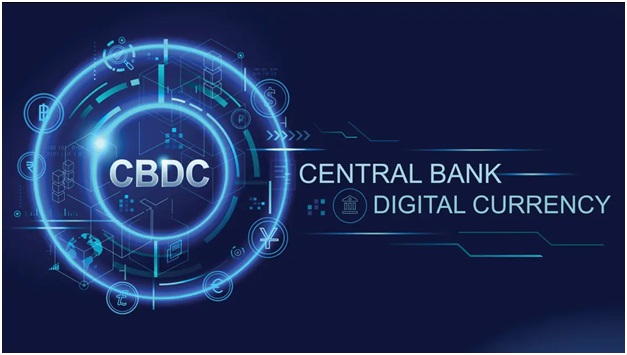
- 06 Sep 2023
Why in the News?
The State Bank of India has announced the implementation of UPI interoperability in its Digital Rupee (eRupee) also called Central Bank Digital Currency (CBDC).
Context:
- Banks are making it possible for Unified Payments Interface's (UPI) Quick Response (QR) codes to work seamlessly with their central bank digital currency (CBDC) or e? applications.
- Interoperability means that the payment system can function smoothly alongside other payment systems.
- It enables system providers and participants from different systems to conduct, process, and settle payment transactions across systems without the need for involvement in multiple systems.
- As a result of this interoperability, users of the retail digital rupee will be able to make transactions by scanning any UPI QR code at a merchant's establishment.
- Additionally, merchants can now accept digital rupee payments through their existing UPI QR codes.
- This integration of UPI and CBDC is part of the Reserve Bank of India's (RBI) ongoing pilot project to promote the adoption of the retail digital rupee (e?-R).
What does UPI QR code-CBDC interoperability mean?
- Interoperability between UPI and the digital rupee ensures that all UPI QR codes can now be used seamlessly with CBDC apps.
- Initially, during the launch of the pilot for the retail digital rupee, e?-R users were required to scan a specific QR code for their transactions.
- However, thanks to the interoperability of these systems, payments can now be initiated using a single QR code.
- In this setup, the e? is stored in a digital wallet, which is connected to the customer's existing savings bank account, while UPI is directly linked to the customer's account for payments.
How will interoperability contribute to increased CBDC adoption?
- Interoperability between CBDC and UPI is poised to drive the adoption of the digital rupee, especially considering UPI's widespread use.
- Currently, UPI is a highly popular payment method, with more than 70 mobile apps and over 50 million merchants accepting UPI payments.
- In July, the RBI Deputy Governor reported that there were 1.3 million customers and 0.3 million merchants using the retail digital rupee.
- However, the daily e?-R transactions in July ranged from 5,000 to 10,000, indicating room for growth.
- The seamless integration of CBDC with UPI is expected to boost the acceptance and utilization of digital currencies in everyday transactions.
How will this benefit customers and merchants?
- The UPI and CBDC interoperability will streamline transactions for both customers and merchants, eliminating the need to switch between multiple digital platforms.
- Digital rupee users can now effortlessly make payments for everyday essentials like groceries and medications by scanning any UPI QR code at any merchant's store.
- Merchants will no longer need a separate QR code to accept digital rupee payments; they can seamlessly receive CBDC payments through their existing QR code setup.
- If the merchant has a CBDC account, the payment will be settled in their CBDC wallet. For merchants without a CBDC account, there will be an option to process payments using UPI.
What is a QR code?
- A QR code, short for Quick Response code, is a pattern of black squares arranged in a square grid against a white background, designed to be read by imaging devices like cameras.
- These codes contain information related to the item they are associated with. QR codes serve as a convenient and contactless method for various purposes, including enabling businesses to receive payments directly into their bank accounts from customers.
What is Central Bank Digital Currency (CBDC)?
- CBDC stands for Central Bank Digital Currency, which is a digital form of legal tender issued by a central bank.
- In the case of India, the Reserve Bank of India has introduced the digital rupee, known as e-Rupee.
- This digital currency holds the same value as traditional fiat currency and can be exchanged on a one-to-one basis.
- The primary distinction is its digital format.
- The launch of the digital rupee is divided into two main categories: general purpose (retail) and wholesale.
- This categorization is based on how the digital rupee is used and its accessibility levels.
- Starting from November 1, 2022, the RBI initiated its first pilot project for the use of the digital rupee in the wholesale market, specifically for secondary trade in government securities (G-secs).
- Wholesale CBDC has the potential to enhance the efficiency and security of settlement systems for financial transactions conducted by banks, particularly in the government securities segment, inter-bank market, and capital market.
- This transformation is achieved by reducing operational costs, improving collateral usage, and enhancing liquidity management.
- Subsequently, from December 1, 2022, the pilot for the retail digital rupee (e-R) was launched.
- Essentially, the retail e-rupee serves as an electronic substitute for physical cash and is primarily intended for everyday retail transactions.
- It is accessible to all, including the private sector, non-financial consumers, and businesses.
- Distribution of the retail digital rupee will be facilitated through intermediaries, such as banks.
- It does not accrue any interest and can be converted into other forms of money, such as bank deposits.
Mains Question:
- Discuss the potential advantages and disadvantages of implementing a Central Bank Digital Currency (CBDC) like the digital rupee (e-R) in India, and elucidate its possible implications on the broader financial ecosystem? (10M)
Chandrayaan-3 | Vikram Hops on the Moon and Lands Safely (The Hindu)
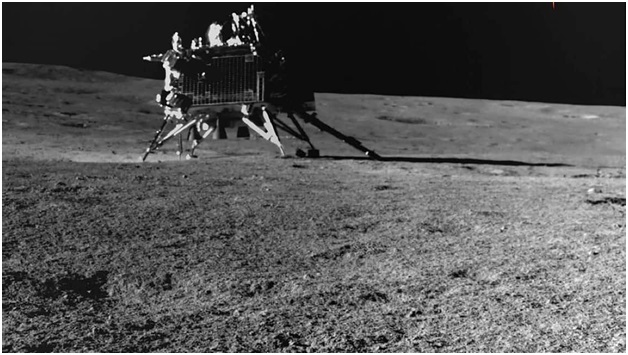
- 05 Sep 2023
Why in the News?
Surpassing its intended mission goals, the Chandrayaan-3 mission's lander, Vikram, has reached a noteworthy milestone by successfully conducting a hop experiment.
Context:
- The Indian Space Research Organisation (ISRO) announced on Tuesday that the lander completed a successful hop experiment.
- Upon receiving the command, it activated its engines, lifting itself by approximately 40 cm as planned and made a safe landing within a range of 30–40 cm.
- This achievement in the hop experiment is of significant importance for upcoming missions, especially those aimed at retrieving lunar samples and future human expeditions to the moon. The lander module, which carried the rover Pragyan, had previously executed a successful soft landing on August 23. Following that, Pragyan was carefully deployed onto the lunar surface.
What is Hop Test?
- In the context of space exploratiom a "hop test" is typically refers to an experiment where a spacecraft's lander or rover briefly lifts off or hops above the surface of a celestial body, such as the moon or Mars, before landing back safely.
- This test is conducted to demonstrate the spacecraft's ability to perform controlled vertical takeoffs and landings.
- In lunar missions, for example, a hop test is crucial for various reasons:
- Mobility: Hopping allows the lander or rover to move to a different location on the lunar surface, providing it with increased mobility and access to a wider range of scientific targets.
- Avoiding Obstacles: Hopping can help the spacecraft avoid obstacles or hazards on the surface, such as large rocks or rough terrain.
- Positioning: Hopping can reposition the spacecraft's instruments or cameras for better observations.
- The successful execution of a hop test demonstrates the spacecraft's precision in controlling its engines, which is crucial for safe landings, mobility, and conducting experiments on celestial bodies with low or no atmosphere.
Post Hop Experiment Updates:
- ISRO reported that the spacecraft and its onboard instruments remained in excellent working condition after the successful 'hop.'
- Instruments such as the deployed ramp, ChaSTE, and ILSA were folded back and redeployed without any issues following the experiment.
- Subsequently, the payloads onboard the lander were deactivated in anticipation of the approaching lunar night.
- The solar-powered instruments were not designed to endure the extremely frigid temperatures of the lunar night, which can plummet to below -120 degrees Celsius.
- Therefore, the instruments on the rover were placed in a sleep mode a few days ahead of the start of the lunar night, which lasts for 14 Earth days.
- If the battery retains some charge during this period, the instruments can be reactivated when sunlight becomes available once more.
- Additionally, the ISRO Chairman announced plans to extend the mission life of both the lander and rover shortly after the launch of the Aditya-L1 mission.
- Originally, the mission life for both the lander and rover was set at just one lunar day, equivalent to 14 Earth days.
Why is the Hop Test Significant?
- Even though ISRO has not officially disclosed subsequent lunar missions, scientists believe that a sample return mission is a logical progression after Chandrayaan-3.
- In fact, had Chandrayaan-2 succeeded in 2019, Chandrayaan-3 would have been designed as a sample return mission.
- A human lander mission is also anticipated in the future.
- China's Chang'e lunar program has followed a similar trajectory, starting with an orbiter in 2007 and advancing to a lander and sample return mission (most recently in 2020).
- Therefore, the hop test holds critical importance for upcoming lunar missions. In missions involving sample return or human landings, the lander must take off from the lunar surface and return to Earth, necessitating much higher thrust.
- Nevertheless, as a technology demonstration, the 'hop experiment' remains a noteworthy achievement within the Chandrayaan-3 mission.
- The successful hop experiment also showcases India's prowess in space exploration, which could potentially attract international investments to the country's space endeavors.
One Nation, One Election (Indian Express)
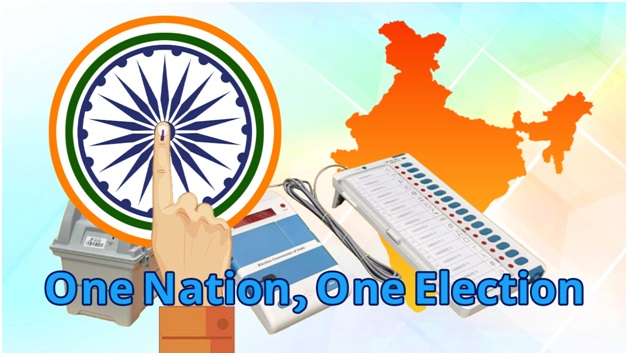
- 04 Sep 2023
Why in the News?
- The Centre on Saturday (September 2) set up a committee to examine various aspects, both legal and logistical, for implementing the “one nation, one election” idea.
- The Law Ministry has outlined seven terms of reference for the eight-member panel headed by former President Ram Nath Kovind and including Union Home Minister Amit Shah.
- One of the terms of reference is to examine if a constitutional amendment to facilitate simultaneous polls would have to be ratified by the states.
What is the 'One Nation One Election' system?
- The current electoral system in the country conducts separate elections for the Lok Sabha and state Assemblies with a five-year gap.
- This gap is based on the conclusion of the Lower House's tenure, the state government's term, or premature dissolution of either.
- State assemblies may not align their terms with each other or with that of the Lok Sabha, resulting in a continuous cycle of elections throughout the year.
- The 'One Nation One Election' proposal suggests holding simultaneous elections for all states and the Lok Sabha every five years.
- This would require restructuring the Indian election calendar to synchronize state and central elections.
- Voters would then cast their ballots for both the Lok Sabha and state assemblies on a single day, simultaneously or in phased manner as needed.
Amending the Constitution:
Constitutional Provisions:
- In India, Article 368 of the Constitution outlines the power and procedure for amending the Constitution.
- The interpretation of this provision has led to tensions between Parliament and the judiciary since 1951.
Mixing of Flexibility and Rigidity:
- During the debates of the Constituent Assembly, there was extensive discussion on whether the Constitution should be flexible or rigid.
- The British constitution is often considered flexible because it can be amended by Parliament just like any other ordinary legislation.
- In contrast, the United States Constitution cannot be amended without the ratification of at least three-fourths of the individual states.
India's Approach:
- The Indian Constitution adopted a combination of flexibility and rigidity.
- It allows for constitutional amendments through judicial interpretation and conventions established through usage.
Informal Amendments:
- Informally, the Constitution is modified through judicial interpretation and established conventions.
- For instance, in the process of appointing judges to the higher judiciary, although the Constitution refers to a consultation between the President and the Chief Justice of India, the Supreme Court's interpretation has evolved it to mean "concurrence."
- This interpretation led to the development of the collegium system for appointing judges, effectively bringing about a change in the essence of the Constitution.
What is the Amendment Process?
Simple Majority:
- Many provisions of the Constitution can be amended through a straightforward legislative process similar to passing regular laws in Parliament.
- This amendment method is achieved by a majority of those present and voting and does not require a quorum.
- Although Article 368 doesn't explicitly list such 'less significant' provisions, they are excluded from its scope throughout the Constitution, establishing a separate category.
- Examples include changing state names, admitting new states to the Union, and adjusting state boundaries.
Special Majority:
- For amending provisions that don't fall into the first category, Article 368 mandates that the amendment Bill must be approved by both Houses of Parliament with a majority of at least two-thirds of the members present and voting.
- According to Rule 158 of the Lok Sabha Rules, the total membership encompasses all members of the House, regardless of any vacancies or absentees at the time.
Ratification by States:
- A third category of provisions not only requires a special majority for amendment but also necessitates ratification by the legislatures of at least half of the states.
- Only after receiving ratification from the states can such an amendment be presented to the President for approval.
- These provisions pertain to the federal character of the Constitution and are commonly known as entrenched provisions.
- For instance, the 99th Constitutional Amendment in 2014, which established the national judicial accountability commission, was ratified by 16 state legislatures before receiving the President's approval.
- Similarly, in 2016, the 122nd Constitutional Amendment Bill introducing the Goods and Services Tax regime was ratified by 23 states.
Established Provisions:
- Article 368 identifies six segments of the Constitution that are subject to additional safeguards when it comes to their amendment.
- These segments include:
- Article 54 and 55, which pertain to the election of the President of India.
- Article 73 and 162, addressing the extent of executive power for the Union and states, respectively.
- Articles 124–147 and 214–231, dealing with the powers of the Supreme Court and the High Courts.
- Article 245 to 255, concerning the distribution of legislative, taxing, and administrative powers between the Union and the states.
- Article 81–82, governing the representation of states in Parliament.
- Article 368 itself.
State Ratification: A Supreme Court Perspective
- The significance of state ratification was highlighted in the 1992 Supreme Court case of Kihoto Hollohan v Zachillu.
- In this case, the constitutionality of the Tenth Schedule was challenged on the grounds that it had not been ratified by the states.
- The Tenth Schedule deals with the disqualification of elected representatives and aimed to, among other things, limit the jurisdiction of courts in matters related to disqualifications.
- This aspect of the amendment pertained to one of the six areas that require ratification by at least half of the states, namely, the jurisdiction of the Supreme Court and the High Courts.
- The Supreme Court ruled in favor of the validity of the Tenth Schedule but struck down the part of the amendment that tinkered with the jurisdiction of the Supreme Court and the High Courts.
Mains Question:
- Critically evaluate the impact of the 'One Nation One Election' proposal on India's political landscape, and elucidate the potential benefits and drawbacks of such a system? (10M)
Equatorial-Origin Cyclones and Pacific Decadal Oscillation (The Hindu)
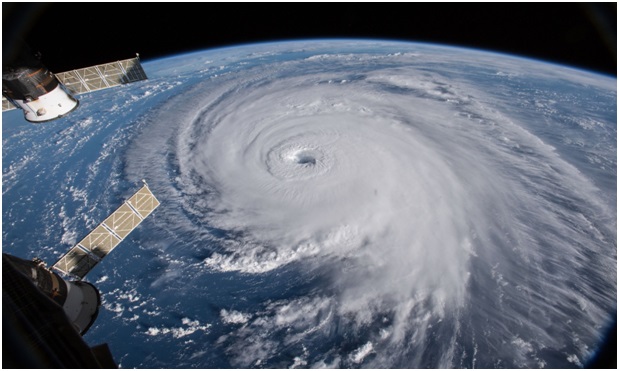
- 02 Sep 2023
Syllabus: Mains – GS I (Geography)
Why in the News?
- In recent decades, tropical cyclones starting near the Equator have been less destructive.
- The most recent big cyclone like this in the Indian area was Cyclone Okchi in 2017. It caused a lot of damage in Kerala, Tamil Nadu, and Sri Lanka.
- But, in the future, these cyclones might happen more often. This is because of two things: global warming and a repeating event called the Pacific Decadal Oscillation (PDO). The PDO comes back every 20-30 years.
What are Equatorial-Origin or Low Latitude Cyclones?
- Equatorial-Origin or Low Latitude Cyclones (LLCs) are cyclones that start between 5°N and 11°N.
- They are smaller in size than cyclones in higher areas but can get much stronger very quickly.
- Normally, cyclones don't form near the equator (low latitude), but when the water is warm, they can gather more moisture and become more powerful.
- Most of these cyclones begin in the Western Pacific Ocean.
- The last big cyclone like this in the Indian area was Cyclone Ockhi in 2017.
- It traveled more than 2000 km and caused a lot of damage in Kerala, Tamil Nadu, and Sri Lanka.
- In the post-monsoon season (Oct-Nov-Dec), the north Indian Ocean (NIO) is a hotspot for LLCs.
- They make up about 60% of all Tropical Cyclones in the NIO since 1951. However, they haven't received as much attention as they should have.
What is the Pacific Decadal Oscillation (PDO)?
- The Pacific Decadal Oscillation (PDO) is a long-term change in the Pacific Ocean.
- It's like a cycle that happens every 20-30 years, and it has both "cool" and "warm" phases.
- Positive (Warm) PDO: During this phase, the western part of the Pacific Ocean becomes cooler, while the eastern part gets warmer. It's the opposite during a negative PDO.
- The term Pacific Decadal Oscillation (PDO) was first used around 1996 by a scientist named Steven Hare.
- Impact of PDO:
- On Global Climate: The PDO's phase can have a big impact on the world's weather. It affects things like hurricanes in the Pacific and Atlantic, droughts and floods around the Pacific, how well marine life does, and patterns in global land temperatures.
- On Cyclones: When the PDO is warmer (positive phase), there tend to be fewer cyclones that start near the equator.
- In 2019, the PDO started getting cooler, going into a negative phase.
- If this continues, it could mean more of those equatorial-origin cyclones in the months after the monsoon.
ENSO and PDO:
- Positive PDO with ENSO is generally unfavorable, but a negative PDO brings more rain to India.
- When the Pacific Decadal Oscillation (PDO) is in a positive phase along with the El Niño-Southern Oscillation (ENSO), it's often not good.
- However, when the PDO is negative, it brings more rain to India.
- When Both ENSO and PDO Match:
- If both ENSO and PDO are in the same phase, it's believed that the impacts of El Niño or La Niña events may be stronger.
PDO vs. ENSO:
- Difference in Repeating:
- El Niño or La Niña events happen in the Pacific Ocean every 2-7 years, but the PDO has a pattern that lasts much longer, often over decades.
- Identifying Positive PDO Takes Time:
- You can figure out if the PDO is in a "positive" or "warmer phase," but it takes several years of measuring ocean temperatures and their interaction with the atmosphere.
- In contrast, you can determine the stage of an ENSO event in any given year.
What is El Niño-Southern Oscillation (ENSO)?
ENSO is one of the most important climate phenomena on Earth due to its ability to change the global atmospheric circulation, which in turn, influences temperature and precipitation across the globe. We also focus on ENSO because we can often predict its arrival many seasons in advance of its strongest impacts on weather and climate.
- The El Niño-Southern Oscillation (ENSO) is a recurring climate pattern involving changes in the temperature of waters in the central and eastern tropical Pacific Ocean.
- On periods ranging from about three to seven years, the surface waters across a large swath of the tropical Pacific Ocean warm or cool by anywhere from 1°C to 3°C, compared to normal.
- This oscillating warming and cooling pattern, referred to as the ENSO cycle, directly affects rainfall distribution in the tropics and can have a strong influence on weather across the United States and other parts of the world.
- El Niño and La Niña are the extreme phases of the ENSO cycle; between these two phases is a third phase called ENSO-neutral.
- El Niño: A warming of the ocean surface, or above-average sea surface temperatures (SST), in the central and eastern tropical Pacific Ocean.
- Over Indonesia, rainfall tends to become reduced while rainfall increases over the central and eastern tropical Pacific Ocean.
- The low-level surface winds, which normally blow from east to west along the equator (“easterly winds”), instead weaken or, in some cases, start blowing the other direction (from west to east or “westerly winds”).
- In general, the warmer the ocean temperature anomalies, the stronger the El Niño (and vice-versa).
- La Niña: A cooling of the ocean surface, or below-average sea surface temperatures (SST), in the central and eastern tropical Pacific Ocean.
- Over Indonesia, rainfall tends to increase while rainfall decreases over the central and eastern tropical Pacific Ocean.
- The normal easterly winds along the equator become even stronger.
- In general, the cooler the ocean temperature anomalies, the stronger the La Niña (and vice-versa).
- Neutral: Neither El Niño or La Niña. Often tropical Pacific SSTs are generally close to average.
- However, there are some instances when the ocean can look like it is in an El Niño or La Niña state, but the atmosphere is not playing along (or vice versa).
Mains Question:
- What are the key environmental and geographical factors that influence the formation and distribution of tropical cyclones in various ocean basins around the world, and how do they differ? (15M)
Production Linked Incentive (PLI) Scheme for IT Hardware (Business Standard)
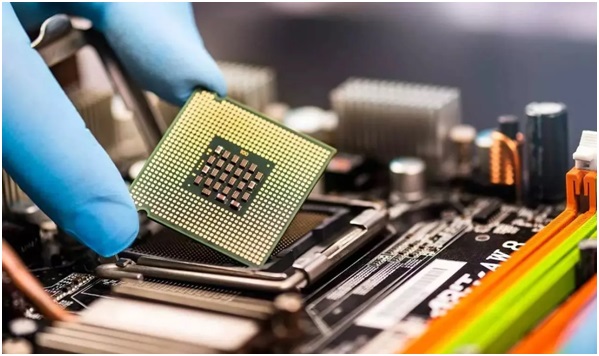
- 01 Sep 2023
Why in the News?
As many as 38 companies, including big names like Foxconn Group, HP, Dell and Lenovo, have applied for incentives under the mega Production Linked Incentive (PLI) IT hardware scheme for manufacturing laptops, PCs and servers.
Context:
- In addition to Asus, Dell, HP, and Foxconn, several other companies, including Lenovo, Acer, and Flex, have submitted applications for the scheme. Notably, Flex is reportedly involved in manufacturing Reliance's JioBook laptop.
- HP Enterprises (HPE) has also sought approval for server manufacturing operations within India.
- Although the expected incremental production over the scheme's six-year duration is projected to reach Rs 3.35 lakh crore, the anticipated additional investment during this period is relatively modest, at just Rs 4,000 crore.
- The government anticipates that the manufacturing activities enabled by the scheme will create approximately 75,000 direct jobs, with the potential to generate up to 2 lakh indirect jobs when considering the broader economic impact.
What is the PLI Scheme?
- The PLI scheme was created to boost domestic manufacturing, reduce reliance on imports, and create more jobs.
- The government has allocated Rs 1.97 lakh crore for various sectors under the PLI schemes, with an additional Rs 19,500 crore designated for PLI in solar PV modules in the 2022-23 Budget.
- Initiated in March 2020, the scheme initially focused on three industries:
- Mobile and allied Component Manufacturing
- Electrical Component Manufacturing
- Medical Devices
- Incentives Under the Scheme:
- The incentives, based on increased sales, vary from 1% for electronics and technology products to 20% for critical key starting drugs and certain drug intermediaries.
- In some sectors like advanced chemistry cell batteries, textile products, and the drone industry, incentives are calculated based on sales, performance, and local value addition over a five-year period.
- Sectors Covered by the PLI Scheme:
- The government has introduced PLI schemes for 14 sectors, including automobiles and auto components, electronics and IT hardware, telecom, pharmaceuticals, solar modules, metals and mining, textiles and apparel, white goods, drones, and advanced chemistry cell batteries.
- Objectives:
- The government introduced this scheme to reduce India's dependence on foreign countries, particularly China.
- It aims to support labor-intensive sectors and increase employment in India while reducing import bills and promoting domestic production.
- The PLI Yojana also encourages foreign companies to establish operations in India and domestic enterprises to expand their production facilities.
What is the PLI scheme for IT Hardware?
- The PLI scheme for IT Hardware was initially announced in February 2021, with an initial allocation of approximately Rs 7,300 crore over a four-year period.
- Incentive Structure:
- Under this scheme, domestic companies that invest Rs 20 crore and achieve sales of Rs 50 crore in the first year, Rs 100 crore in the second year, Rs 200 crore in the third year, and Rs 300 crore in the final year can receive incentives ranging from 1% to 4% on incremental sales compared to the base year of 2019-20.
- Revised Version:
- The initial version of the scheme had limited success, with only two companies, Dell and Bhagwati, meeting the first-year targets.
- Consequently, the industry called for a revamped scheme with a larger budget.
- In response, the Union Cabinet approved a revised PLI scheme for IT hardware in May 2023, allocating Rs 17,000 crore, more than doubling the budget.
- Potential Impact:
- PLI 2.0 has the potential to attract major global IT hardware manufacturers to establish their production operations in India, bolstering the local production of laptops, servers, personal computers, and more.
- Over a six-year period, the average incentive is expected to be around 5%, compared to the previous 2% over four years.
- Achieving Digital Economy Goals:
- With the IT hardware industry aiming for a production value of $24 billion by 2025-26 (with exports estimated at $12-17 billion), this scheme plays a crucial role in realizing the goal of a $1 trillion digital economy, including $300 billion from electronics manufacturing by 2025-26.
How Will the PLI Scheme Drive Local Production in India?
- Despite identifying electronics manufacturing as a pivotal sector for future economic growth, India has witnessed a surge in the import of electronic goods in recent years.
- Import Scenario:
- For instance, the import of electronic goods surged to $6.96 billion during April-June this year, up from $4.73 billion in the same period last year, constituting 4-7% of overall imports.
- The category with the highest import share includes personal computers, including laptops and palmtops.
- China Dominance:
- China commands a significant portion, approximately 70-80%, of India's imports in the personal computer and laptop category.
- Incentives for Component Manufacturers:
- Companies engaged in local manufacturing of specific components like memory modules and display panels will receive supplementary incentives under the revised scheme.
- Performance-Driven Approach:
- The PLI scheme is designed to encourage companies to meet production targets.
- If companies fall short of these thresholds, they may face deductions of up to 10% from their subsidies.
- Synergy with Semiconductor Scheme:
- The PLI scheme will complement the government's semiconductor scheme, with domestically produced chips finding application in laptop manufacturing, further bolstering the local industry.
Mains Question:
- Discuss the impact of the PLI Scheme for IT Hardware on the Indian electronics manufacturing sector. Evaluate its effectiveness in reducing imports and critically assess its potential to stimulate job growth in the country. (15M)
